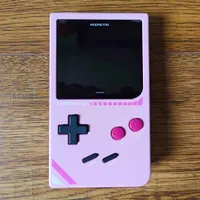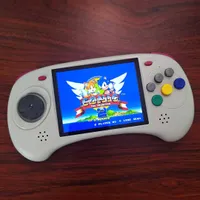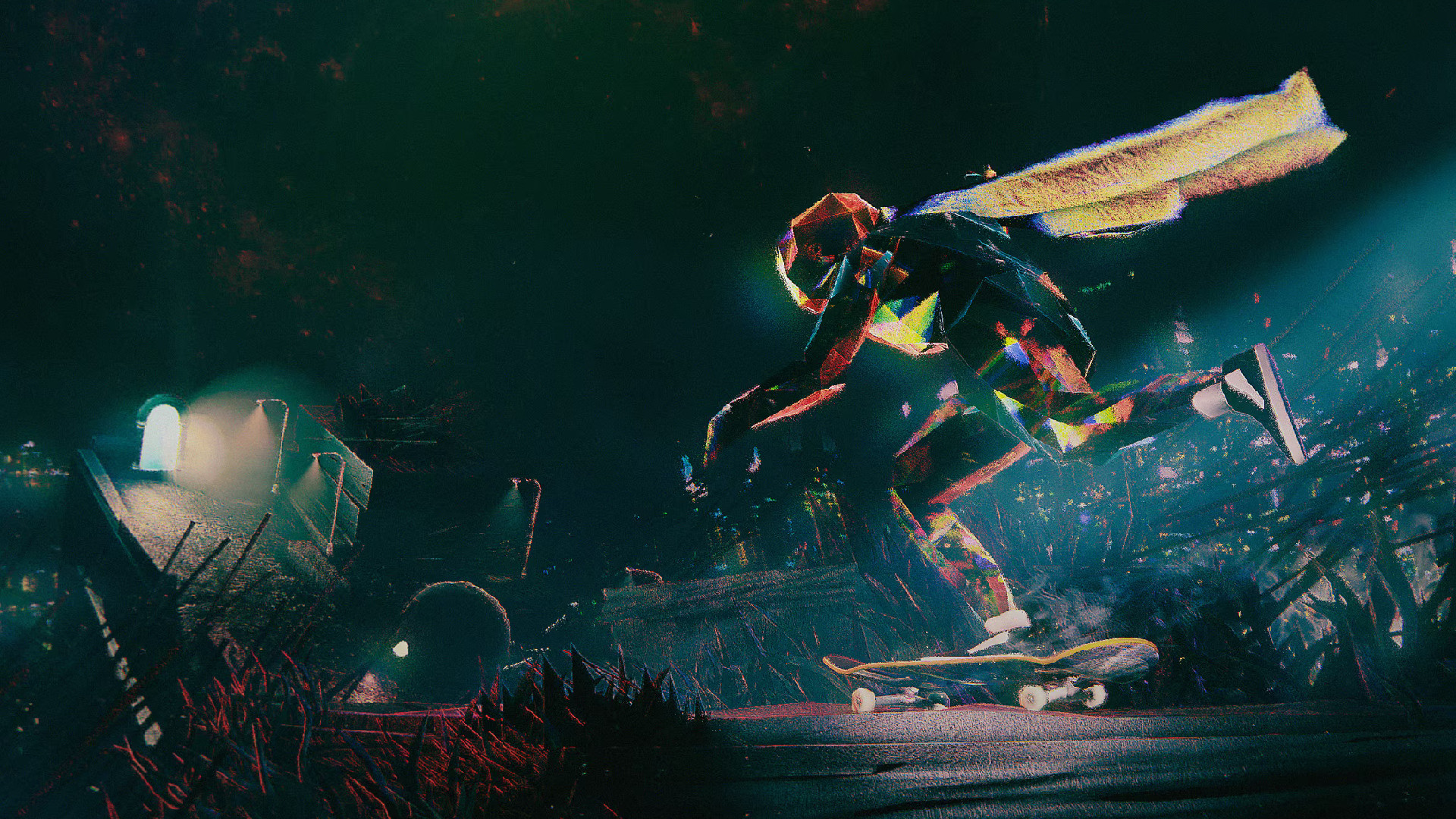Best retro handheld 2025: my portable picks for playing the classics
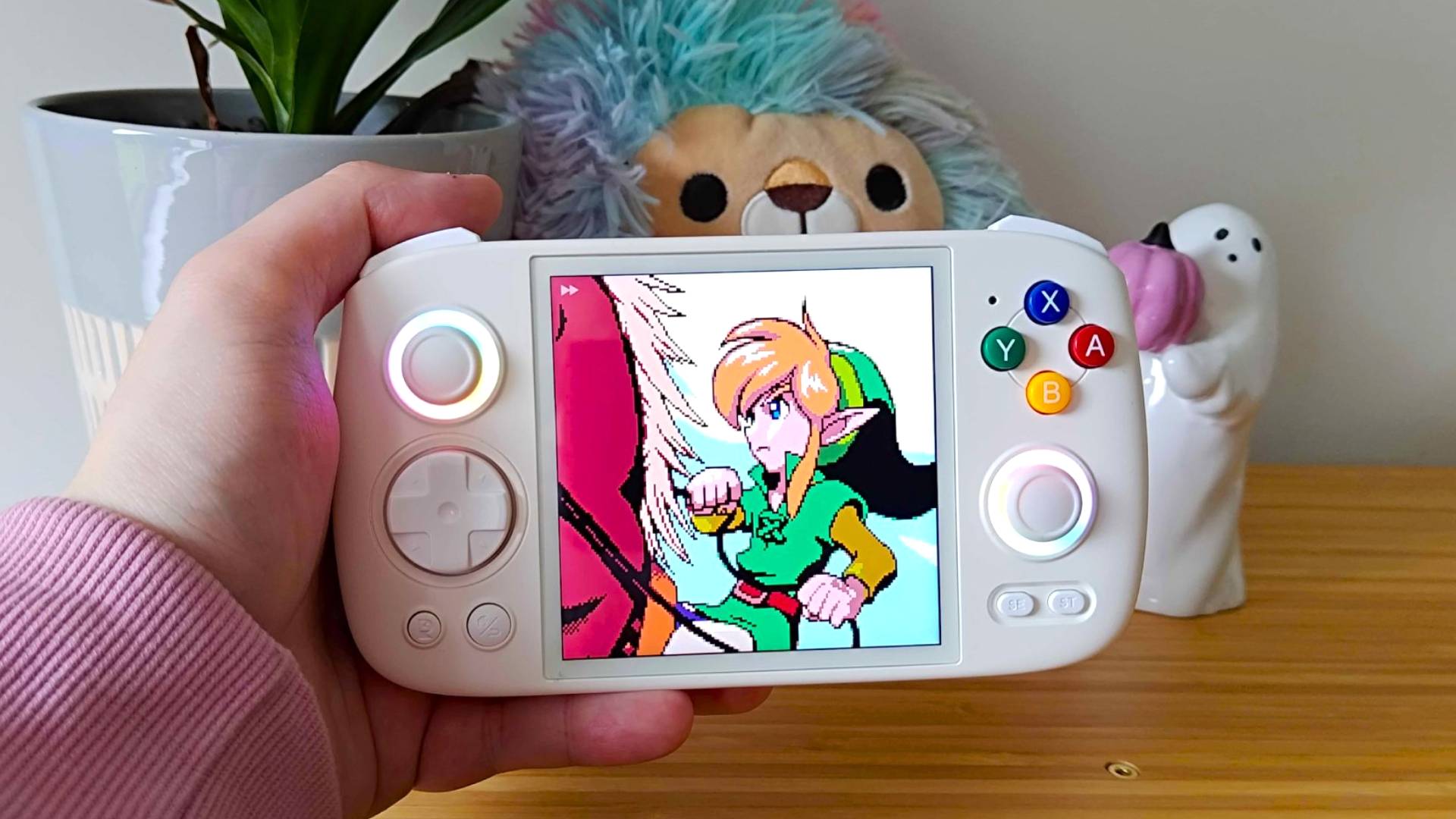
I'm on a never-ending mission to find the best gaming handheld options around, and new contenders won't stop coming. In the space of a short few years, the scene has switched from being primarily dominated by Game Boy clones to featuring devices that'll help revisit more classic console capers than ever.
Over the past 30+ years, I've tested just about every best retro handheld contender you can think of. My journey started as a personal experiment to see if I could replace my beloved Game Boy collection with something more modern, but it has since evolved into a whole quest to find new ways to access the best retro consoles on the go while giving my game library a glow-up.
My best gaming handheld overall for playing retro games right now is the Anbernic RG Cube. It's an oddball portable with a perfectly square screen and a similar horizontal layout to the Steam Deck, but that blend of old and new helps it run everything from NES and SNES classics to even PS2 and DS adventures. That said, it's far from my only pick, so allow me to introduce you to all the best retro handhelds I've tested in 2025 so far.
The Quick list

The Anbernic RG Cube comes with a sturdy build quality and an equally solid battery life to boot. Of all the retro handhelds we've tested so far, this is number one.

Budget-friendly and easy on the pockets, the Anbernic RG28XX is perfect for anyone looking to pick up a casual device that won't break the bank.
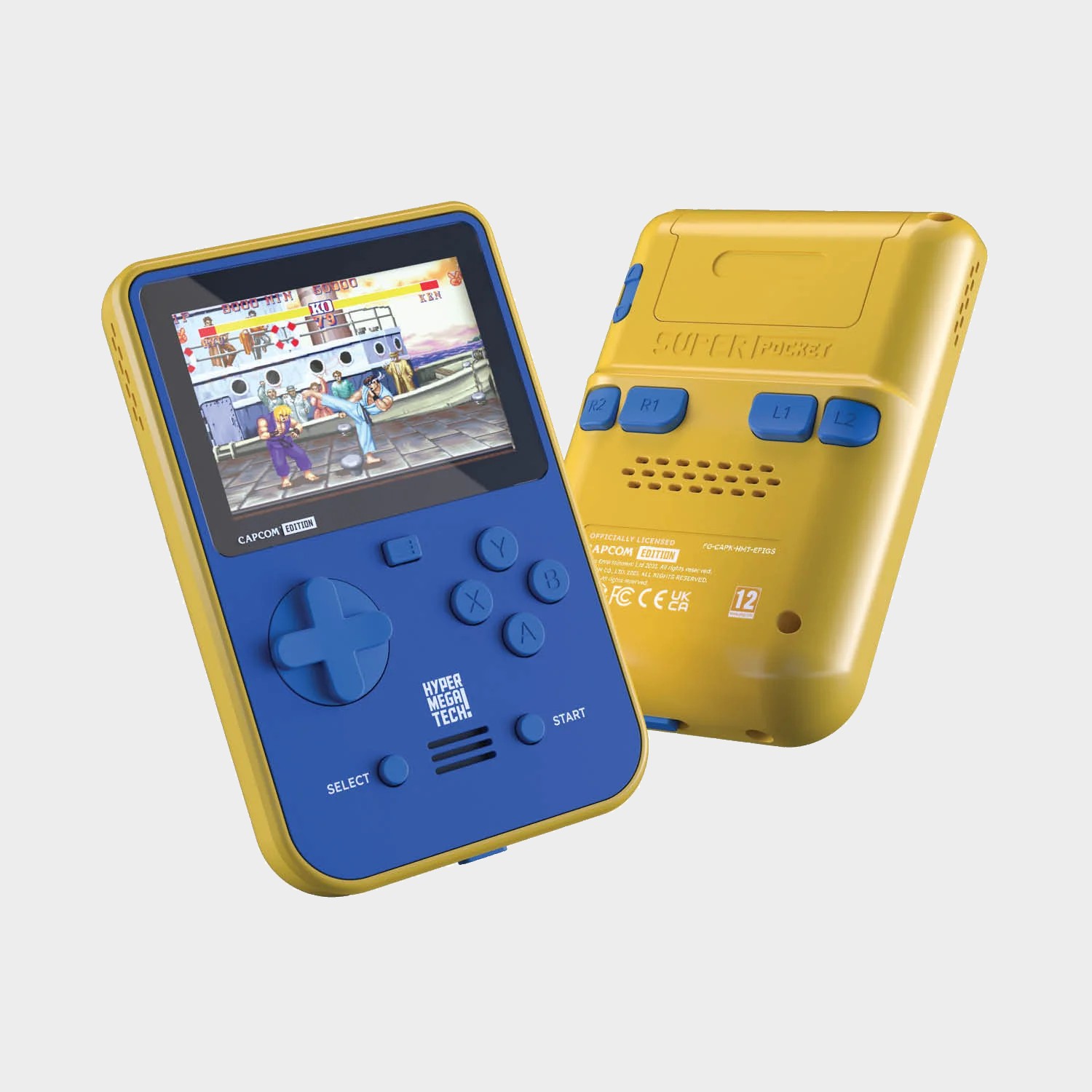
The Super Pocket is a little different. Rather than relying on downloaded ROMs, you're getting a pre-set list of games that can be expanded with physical carts.
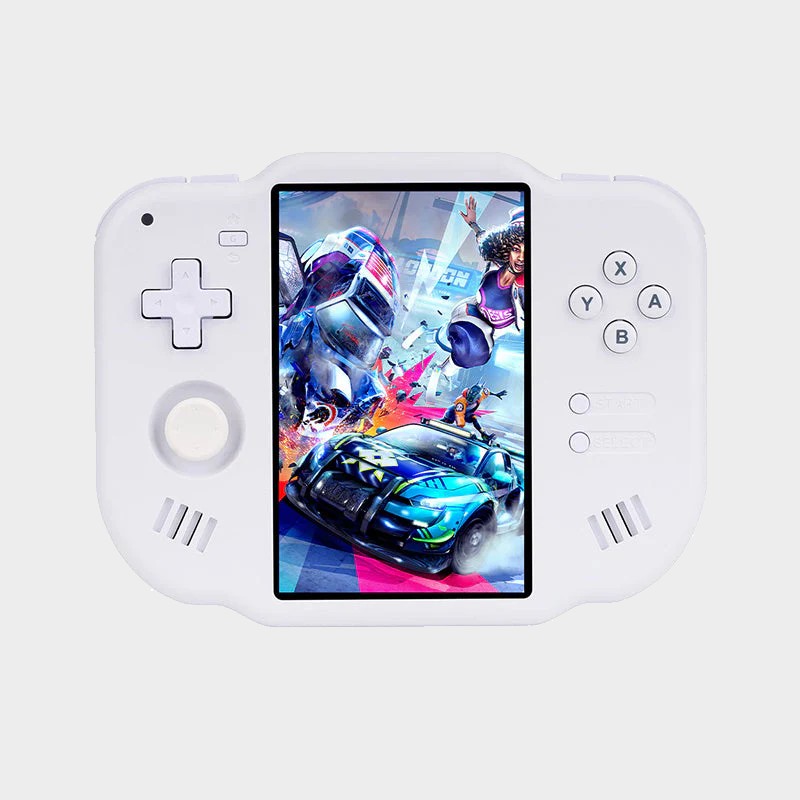
Whether you're after arcade classics or DS emulation, the MagicX Zero 40 offers a comfortable form factor, comfortable design, and solid thumbstick.

The Anbernic RG35XXSP will be instantly recognizable to long-time Ninty fans, but its clamshell chassis is hiding a versatile machine for far more than GBA games.
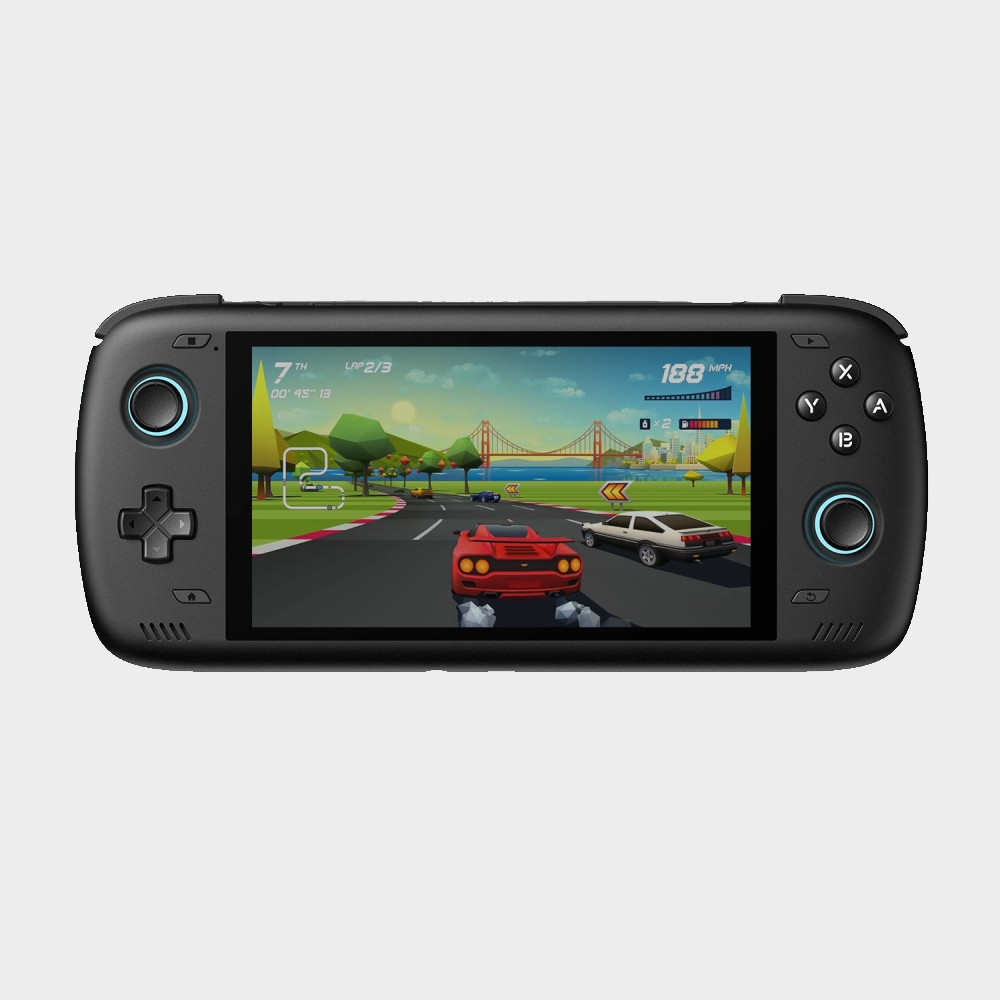
The Ayn Odin 2 is one of the more powerful retro handhelds on the market, which means it runs PS2 (and everything underneath it) particularly well.

When I was just five years old, I was given a hand-me-down Game Boy DMG, and it undeniably transformed me into the retro handheld reviewing monster I am today. While I'm always on the lookout for new devices that can run just about every classic caper you can think of, I also spend hours playing doctor to old portables by way of repairs and fancy new screen mods.
Best retro handheld overall
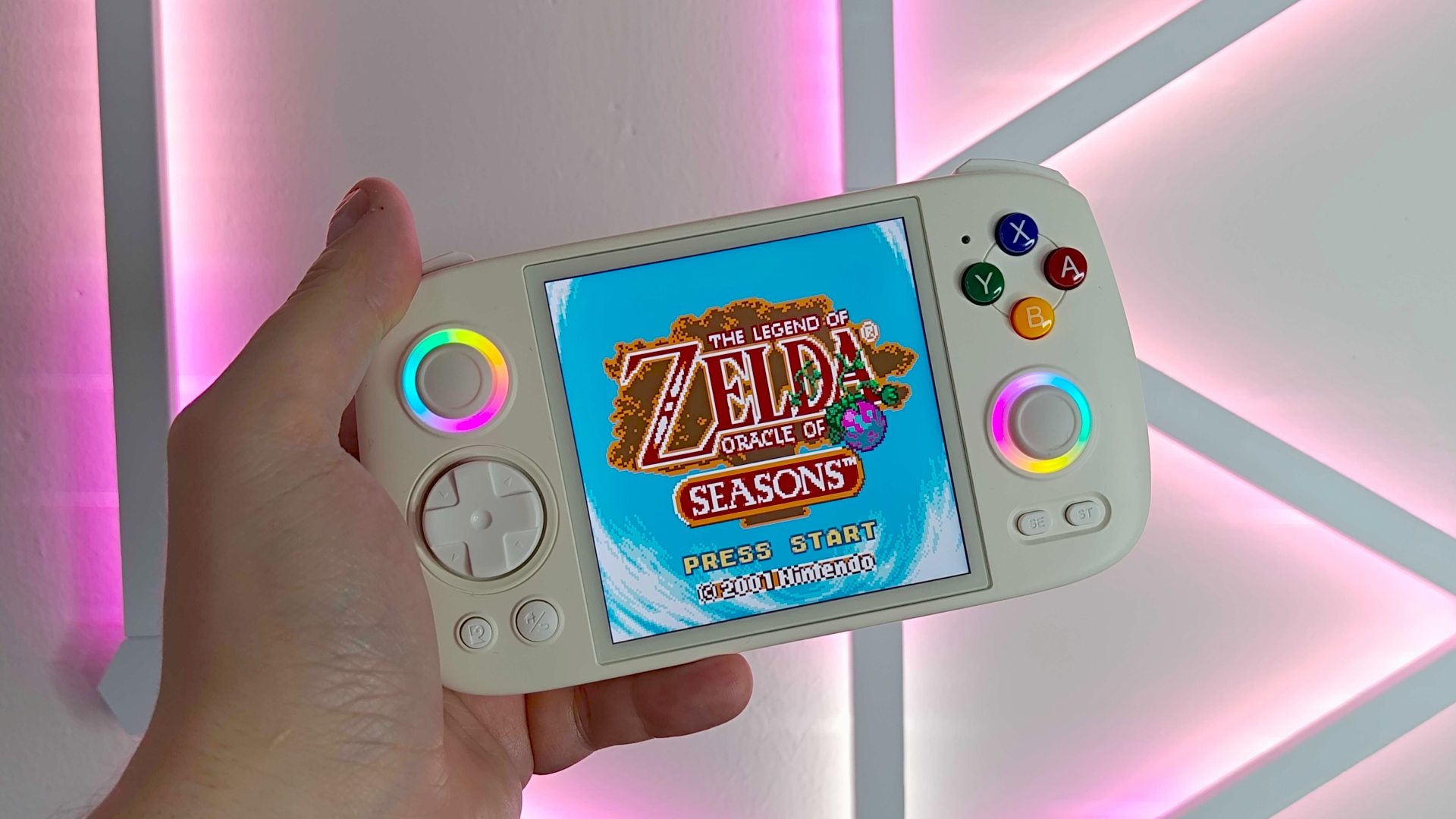
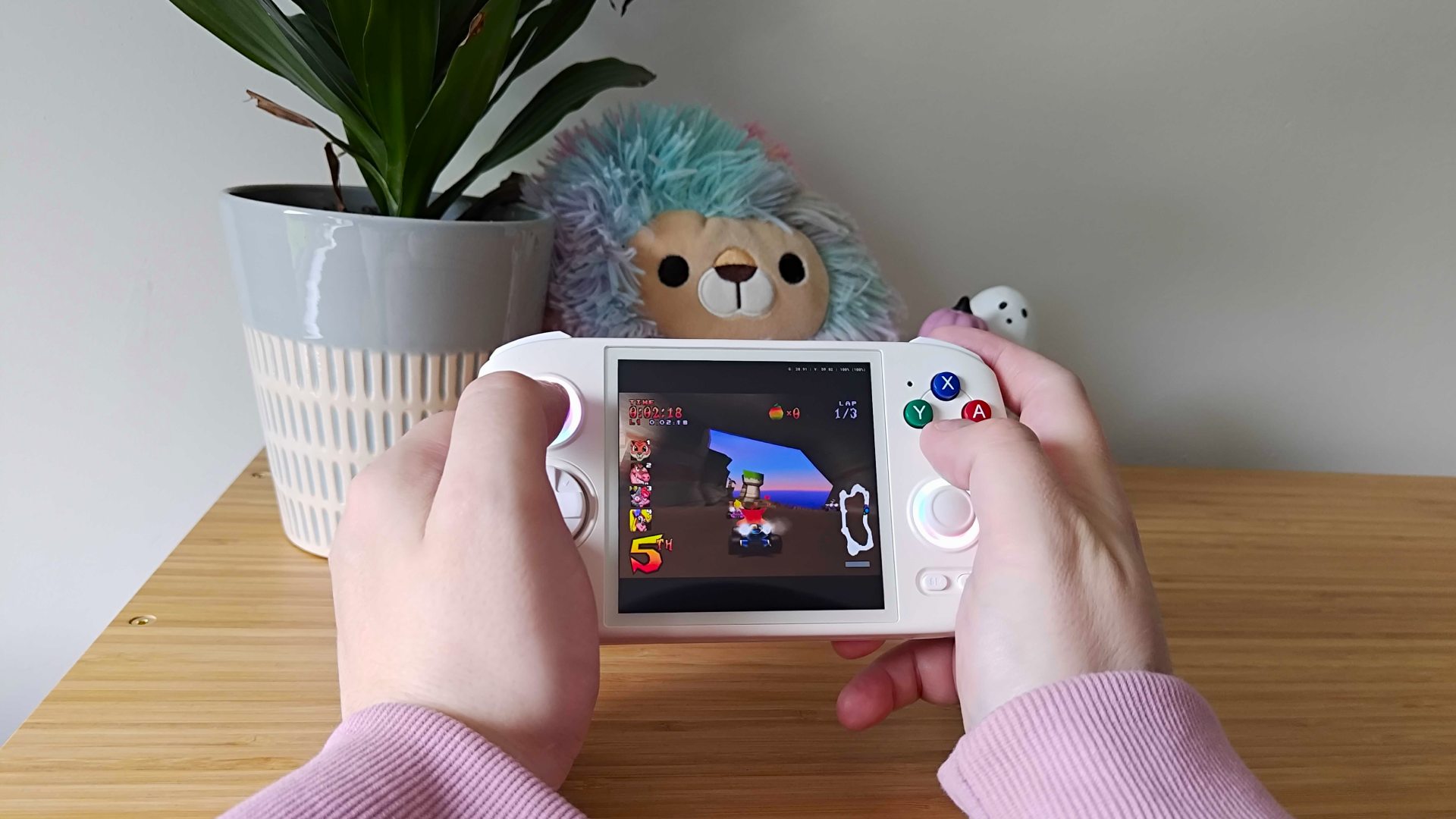

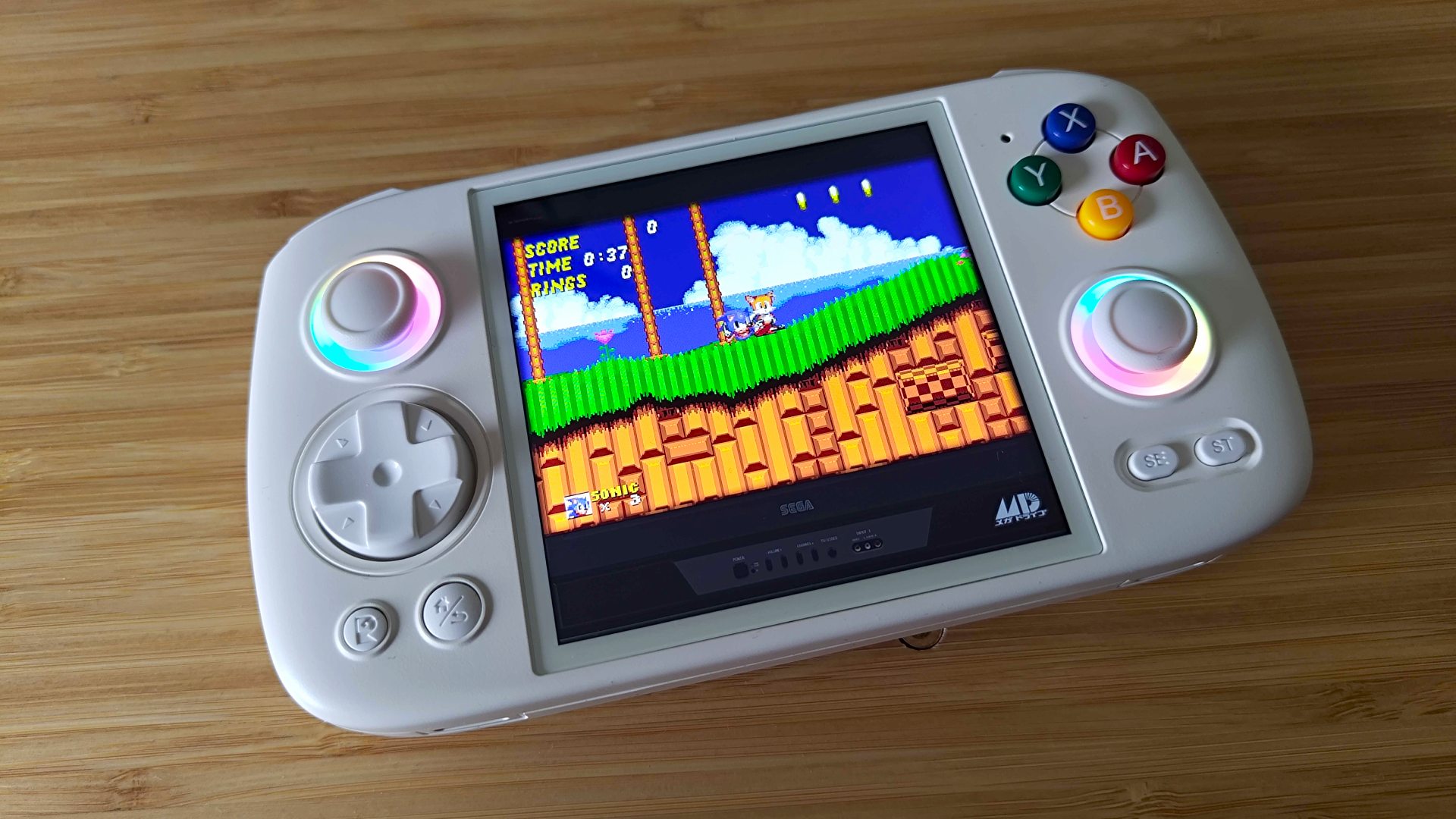
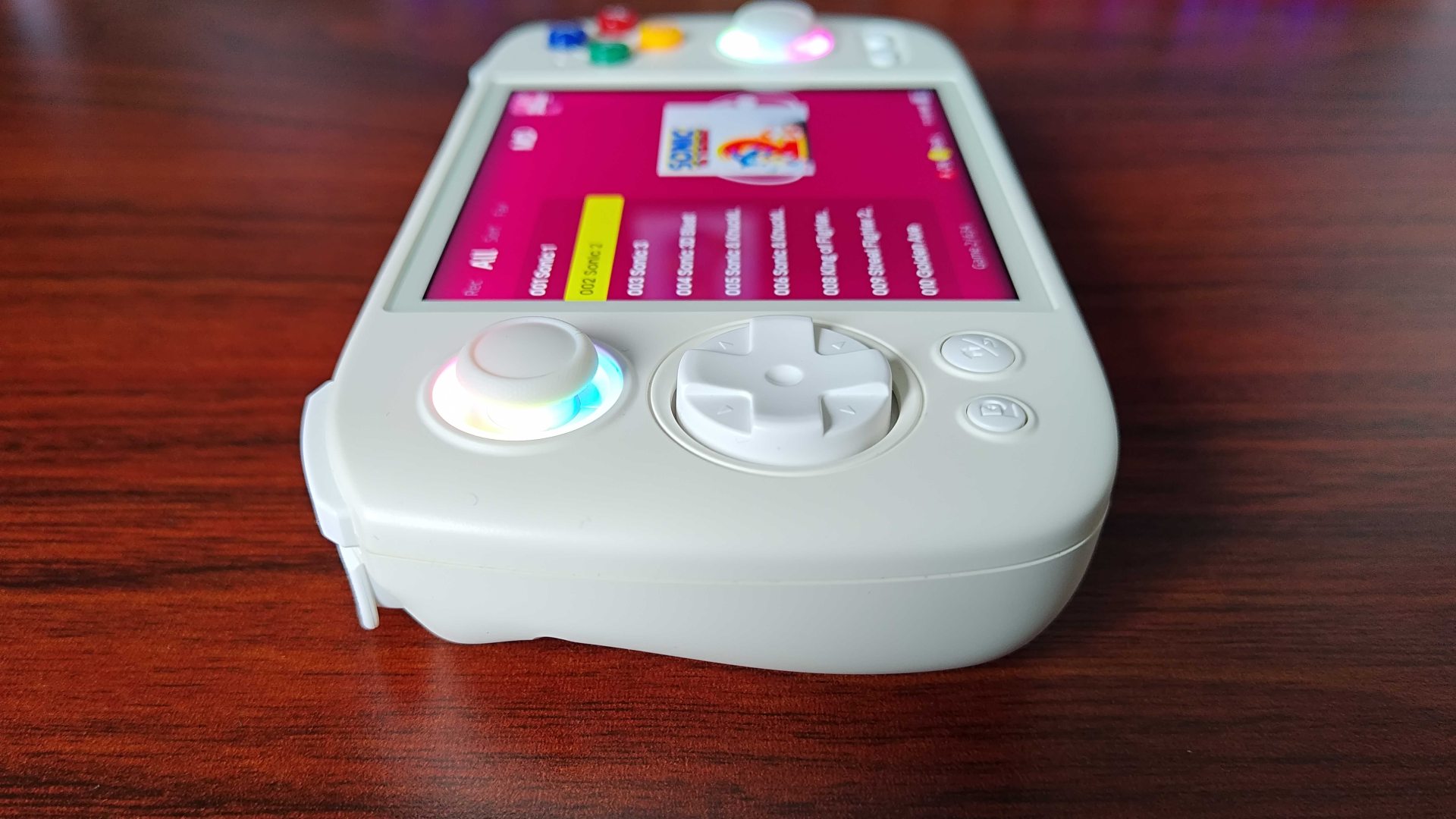
Specifications
Reasons to buy
Reasons to avoid
On paper, the Anbernic RG Cube sounds just plain weird, and it looks like a made-up retro handheld you'd see in a 2000s anime. Yet, that's actually why it's one of my favorite portables for playing almost every classic console you can think of, as it manages to blend old and new design sensibilities into a spectacularly square soup.
✅ You love retro games: It might sound obvious, but if you really love 8 and 16-bit classics, this console will cater to your needs.
✅ You want authentic visuals: Using a square screen over a 16:9 display means you can enjoy any games that use square pixels without stretching, which will appeal to retro enthusiasts.
✅ You value versatility: Thanks to its 1:1 aspect ratio and touchscreen combo, you'll be able to emulate more games on this horizontal handheld than many other similar devices out there.
❌ You don't have existing games: If you don't have a physical collection of games and a means to use them as ROMs on this device, you'll probably want to avoid.
❌ You'd prefer widescreen: This handheld's square display won't be for everyone, and some players might prefer having side letterboxing on something like the Steam Deck when emulating.
❌ You're looking for a vertical layout: Those of you who are specifically looking for a Game Boy-shaped handheld will benefit from checking out other Anbernic handhelds.
Design: Anbernic really dared to wonder what a Steam Deck would look like if you cut its horizontal width, and that gives the RG Cube a distinct aesthetic. Again, it looks like vaporware from an anime, but the design choices are in the name of ergonomic comfort. The back grips help this relatively small handheld feel more conventional than a cramped Game Boy, and it affords the layout room for larger triggers and cooling ventilation.
The Cube puts a lot of care and attention into the rest of its design elements, too. The buttons and triggers are all nice and clicky, the disc-shaped d-pad hits a sweetspot between pivot and direction, and the overall setup feels just right for playing everything from old 16-bit sidescrollers to newer 3D outings. I also want to pay special tribute to the white colorway, as the vibrant buttons pay tribute to the SNES and Famicom in a way that really stands out.
Features: Look, I get it, the idea of using a perfectly square 1:1 screen to play games in 2025 sounds like a gimmick. In a sense, it sort of is, but one that ends up providing heaps of versatility. Naturally, the 720 x 720 3.95-inch touchscreen is going to work well with Game Boy games, but cutting down on horizontal width also helps provide TATE arcade shooters and even DS games with vertical versatility. Simply put, you'll find that you'll be able to practically enjoy a wider range of genres on the display, which isn't typically the case for conventional 4:3 or 16:9 devices.
Make no mistake, though, the RG Cube isn't just a square. This handheld backs up its higher price tag by providing hall-effect joysticks, Android 13 bells and whistles, Bluetooth, Wi-Fi, video out via USB-C, and even a splash of RGB. You're pretty much getting many of the same perks as a portable PC packed into a smaller device, so you won't get FOMO by opting for Anbernic's retro gadget.
Performance: Handheld emulators don't have to be complete powerhouses to pull off running retro games, but the RG Cube is packing a lot of heat for its size. You're getting 8GB LPDDR4X RAM and a Mali-G57 quad-core GPU, which frankly means this portable can outpace even some gaming phones out there. During testing, I had no trouble diving straight into my Sega Genesis library at native resolution, and most PS1, PS2, and Dreamcast romps ran without a hitch with 4x scaling applied (albeit with slight stuttering depending on the game).
Emulation is a complicated beast, so it's always worth testing your own library and preferred settings. That said, I'd say the Cube is as capable as an Android device can get without spending the absolute big bucks on something geared for high-end mobile gaming. Plus, that square screen means you'll actually be able to physically play DS and 3DS adventures since you'll have vertical space for two small dual-screens, and while it's not going to compete with the monstrous Ayaneo Flip DS, I had no trouble diving back into Zelda: A Link Between Worlds on this compact console.
The very nature of emulation means that with time, more systems may run smoothly on this handheld, but it already makes short work of most systems you could consider retro. While its square screen is perfect for Game Boy games, I found myself dabbling with 3DS. Sure, the results can't compete with the likes of the Ayaneo Flip DS, but I was still able to replay favorites like Zelda: A Link between Worlds without a hitch.
Read more: Anbernic RG Cube review
Best budget retro handheld
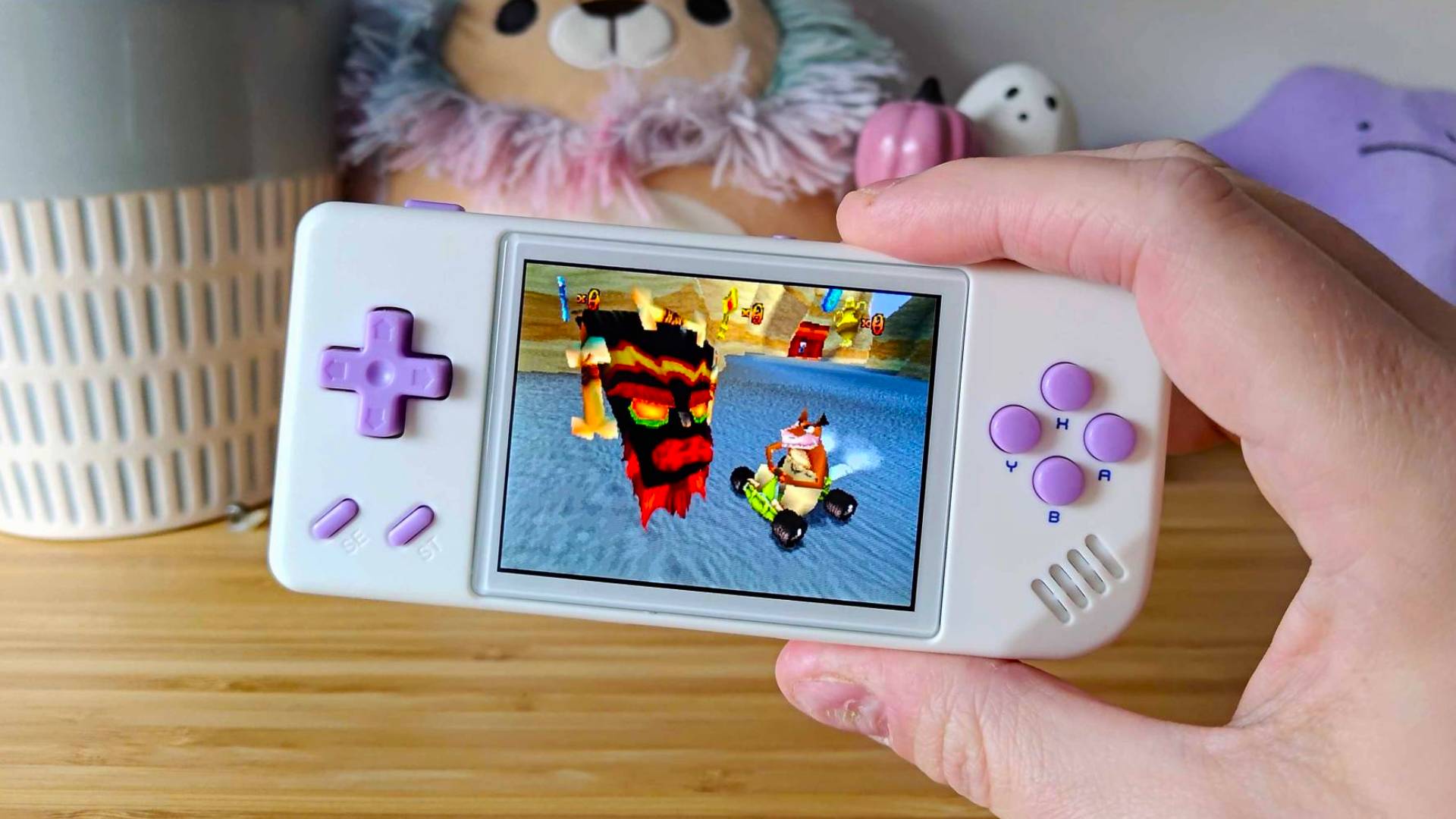
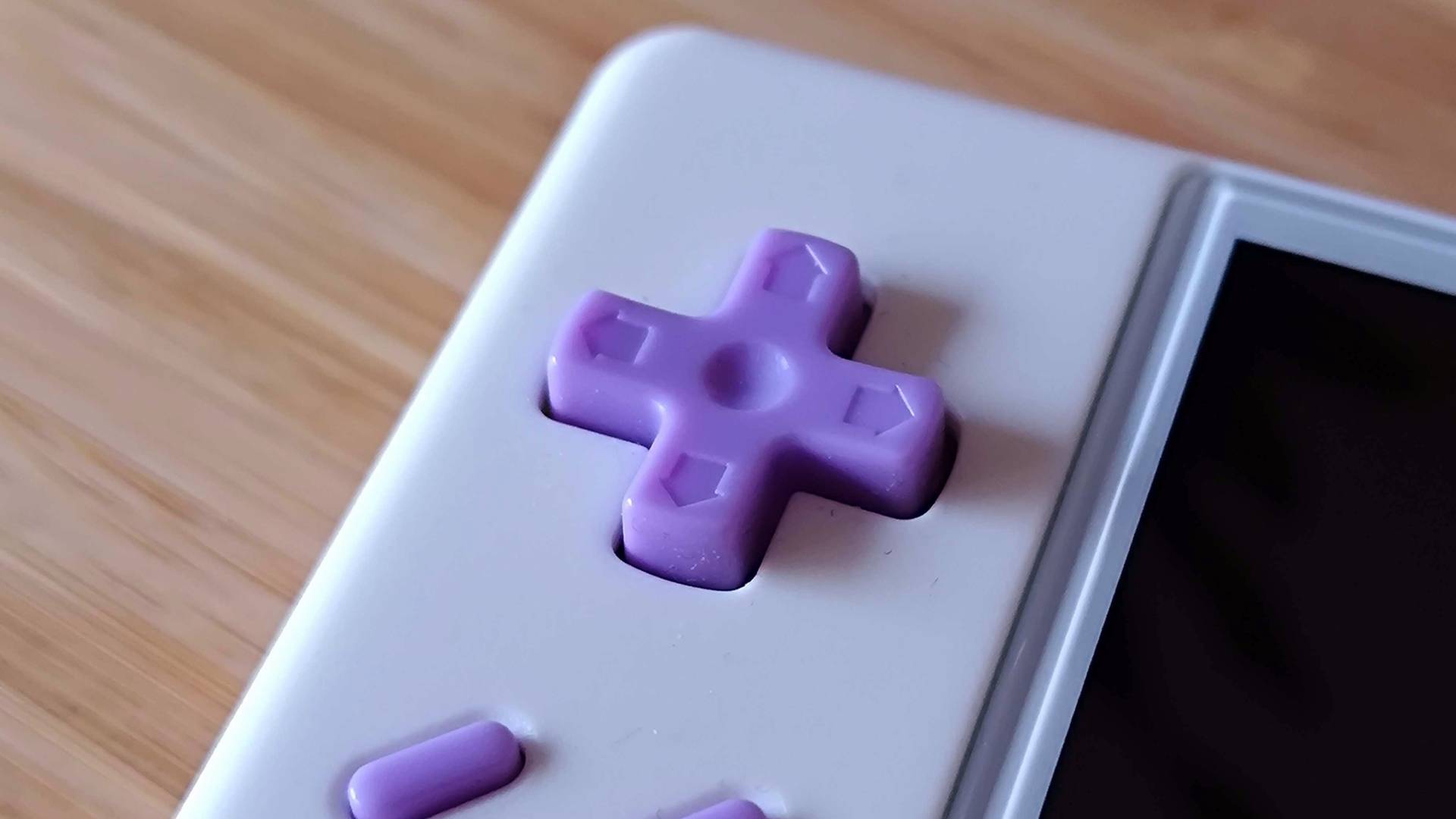
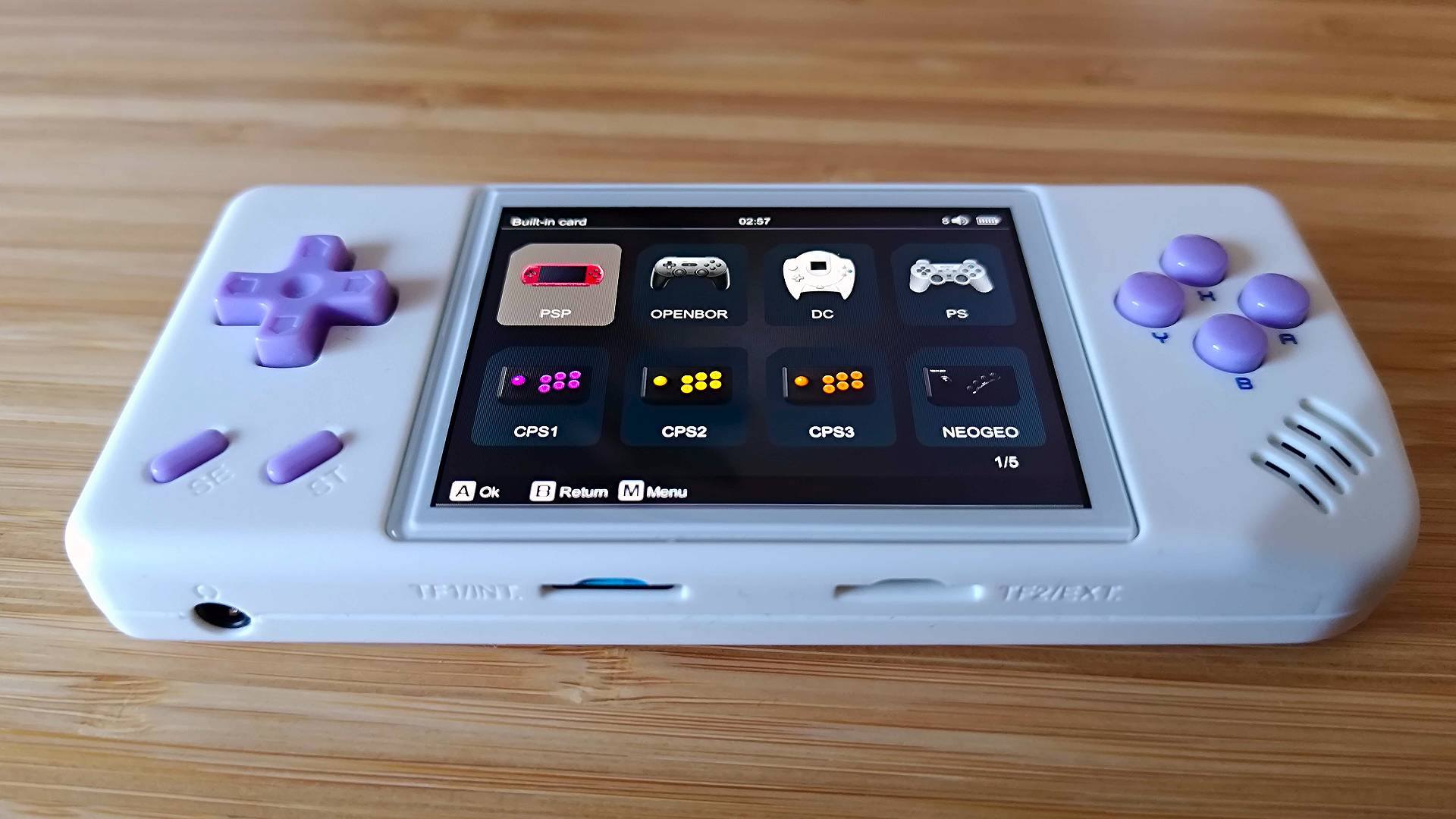
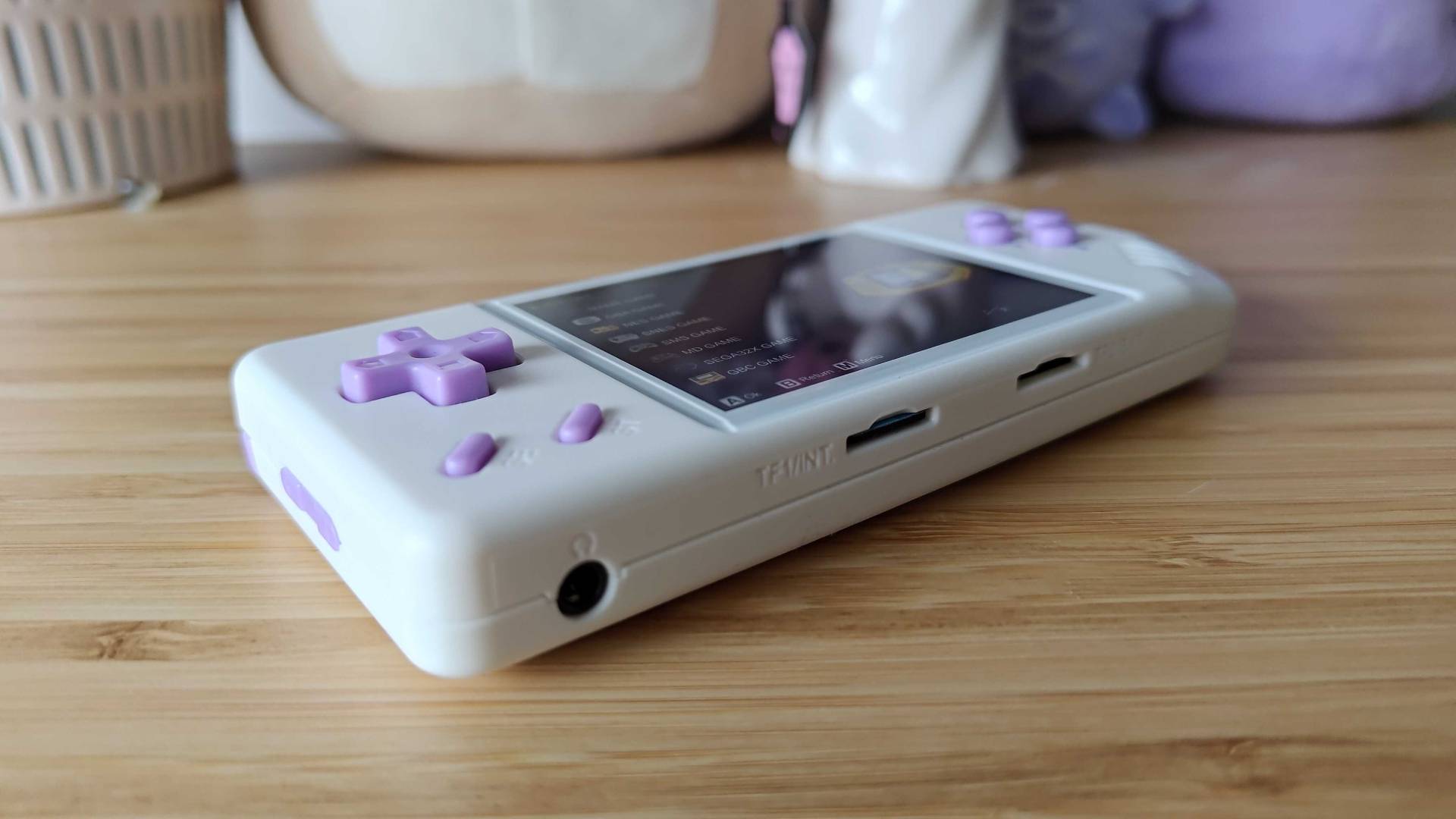
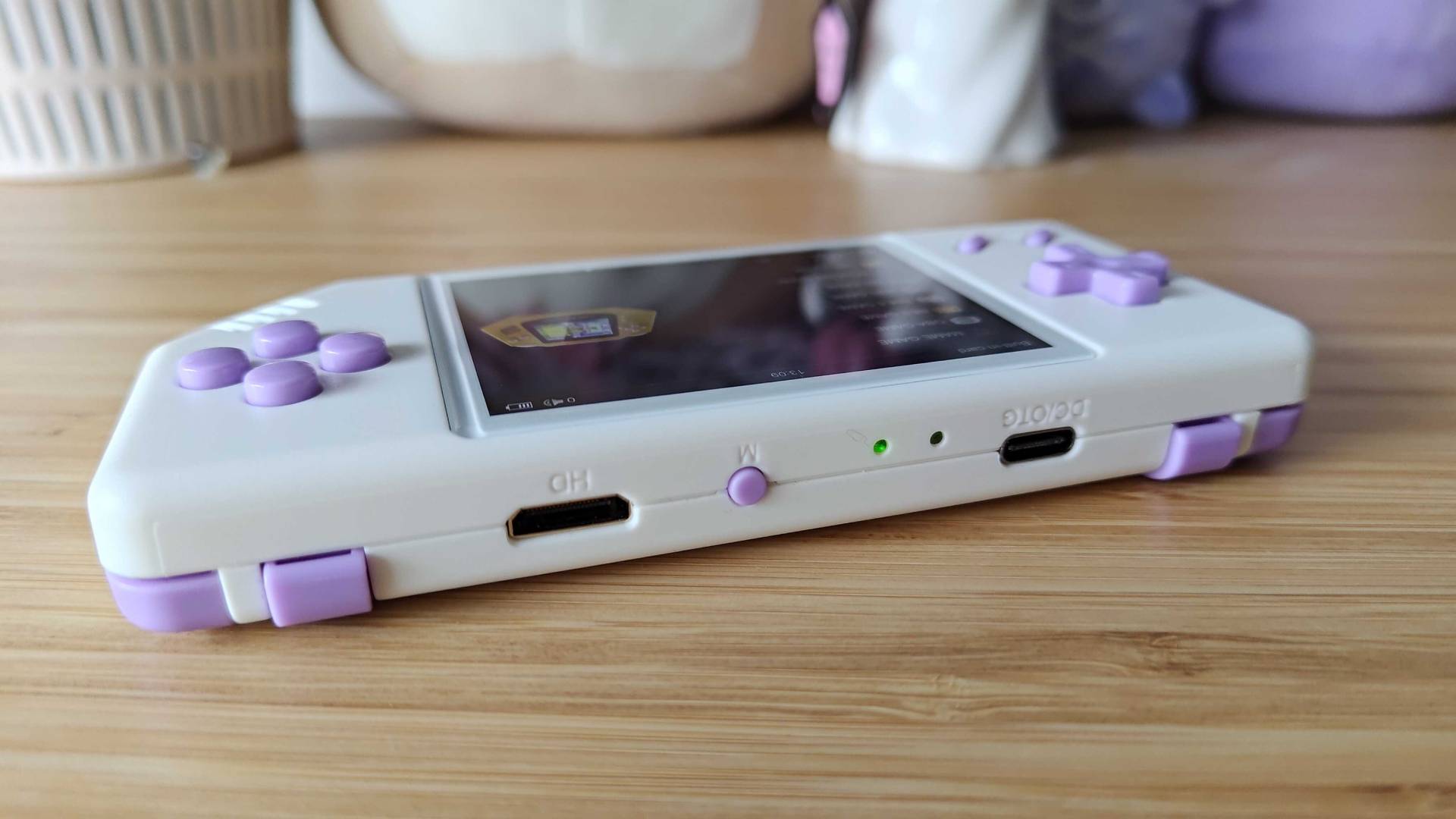
Specifications
Reasons to buy
Reasons to avoid
If you really regret not picking up a Game Boy Micro back in 2005, you'll absolutely want to give the Anbernic RG28XX a look. It pays homage to the Ninty's last GBA in both design and size, but it also makes for an incredibly cheap way to play a whole bunch of classics up to and including the PS1.
✅ You need something pocket-sized: The RG28XX is one of the only handhelds out there that will fit in your pocket pretty discreetly, which makes it a dream travel companion.
✅ You love the Game Boy Micro: Anbernic's homage to the last GBA should help you scratch your Game Boy Micro itch thanks to its design.
✅ You want decent PS1 performance: While this handheld excels at Game Boy games, this pocket rocket makes for a pretty great PS1 emulator.
❌ You've got huge hands: No, really, if you struggle to get your mitts around conventional handhelds, the RG28XX might be far too small to play.
❌ You'd prefer Android: Linux can have its limits, so if you prefer to mess with emulators using Android, this handheld isn't for you.
Design: Handhelds that actually fit in your pocket are few and far between, but the RG28XX is out to prove a point. Rather than aiming for a size that'll just about slip into your jeans, this tiny retro console even fits in the weird little pocket that normally serves no purpose.
That in itself makes this a portable worth buying if you want something ultra small, but just about manages to avoid feeling like a novelty. The RG28XX's buttons, d-pad, and shoulders are admittedly small, but not so much that you'll struggle to play. They're also surprisingly tactile, and my only real complaint is that the back triggers are a little rattly. Is that to be expected given it's often under $40 / £40? Maybe, but it might annoy some of you with eloquent tastes.
Features: Honestly, given the RG28XX's size, I'd give it slack for skimping on features. Yet, it somehow manages to pack some pretty nice extras into its compact shell, including mini HDMI output, vibration, controller support via USB-C, and TF storage up to 512GB.
Frankly, that's everything you could need to take full advantage of the handheld's Linux emulation capabilities. The portable's baked-in OS provides easy access to RetroArch and various other emulators, and while Android can make for a slightly nicer navigational experience, you can easily hop into settings and menus using a dedicated button at the top.
Performance: Let's be real, you're not going to be ripping through your PS2 collection using a tiny Linux handheld like the RG28XX. However, I do regularly use this wee portable to get a few laps of Crash Team Racing, and it's far more capable of handling PS1 classics than you'd expect. It'll naturally serve up Game Game goodness and great 16-bit performance, too, and if the last time you used a handheld like this was five years ago, your mind will be slightly blown.
Even more surprising is that Dreamcast isn't off limits for the RG28XX. Your milage will vary depending on your choice of Sega adventure, so I wouldn't pick it up specifically for the console. But, if you do want room to experiment, you'll have a good time in some of the greats like Crazy Taxi, even if the layout is slightly cramped.
Read more: Anbernic RG28XX review
Best value retro handheld

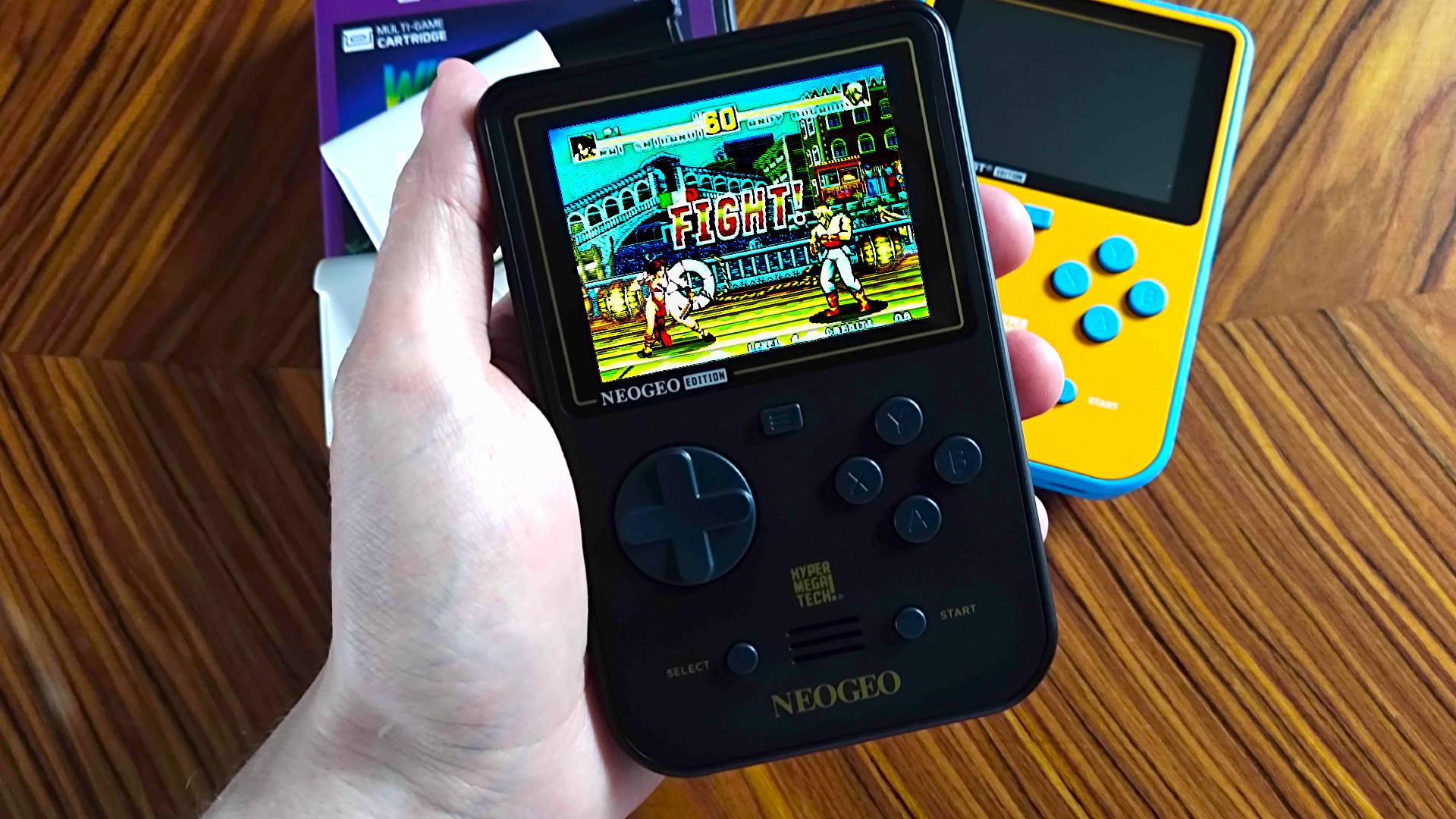
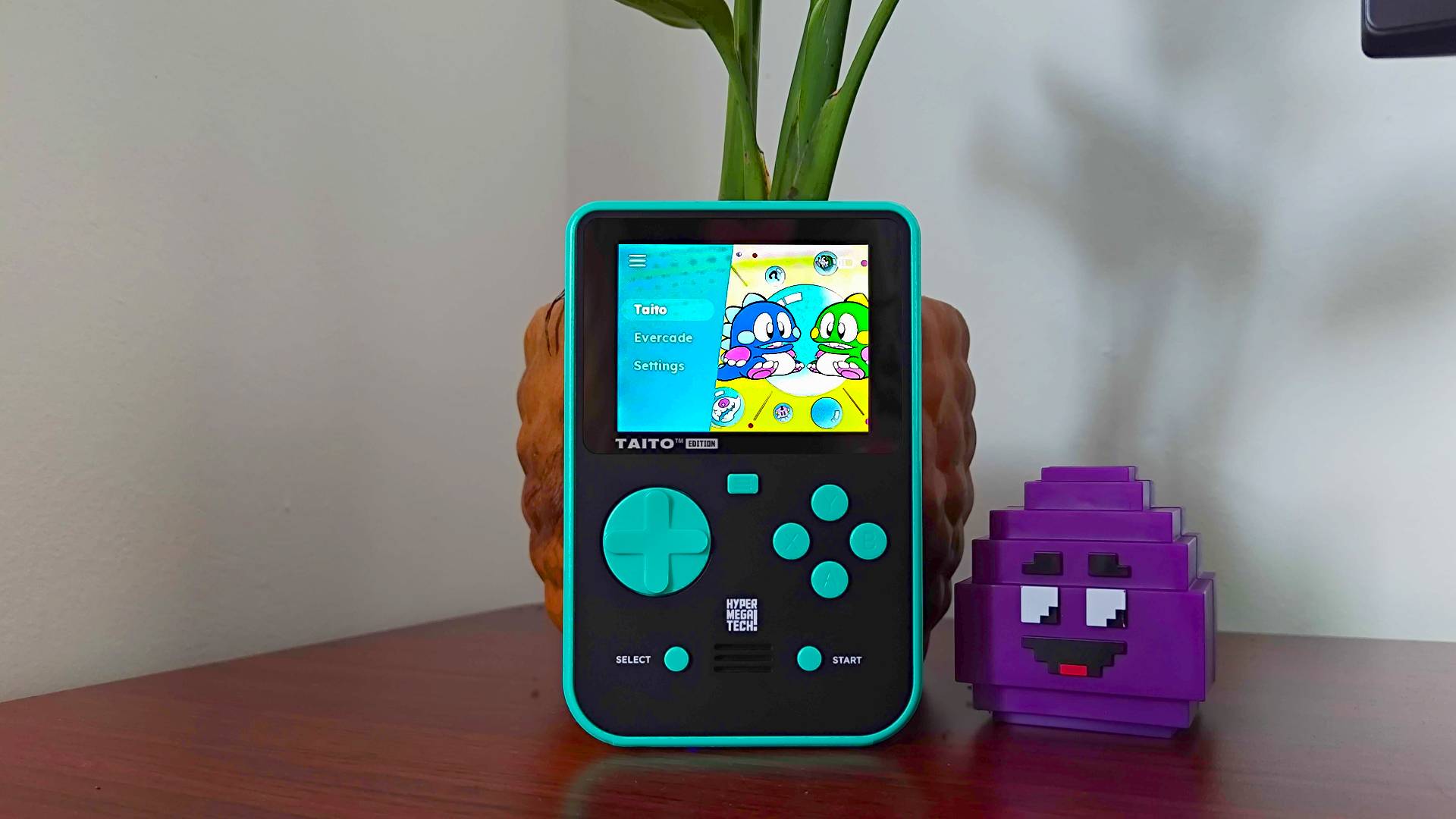
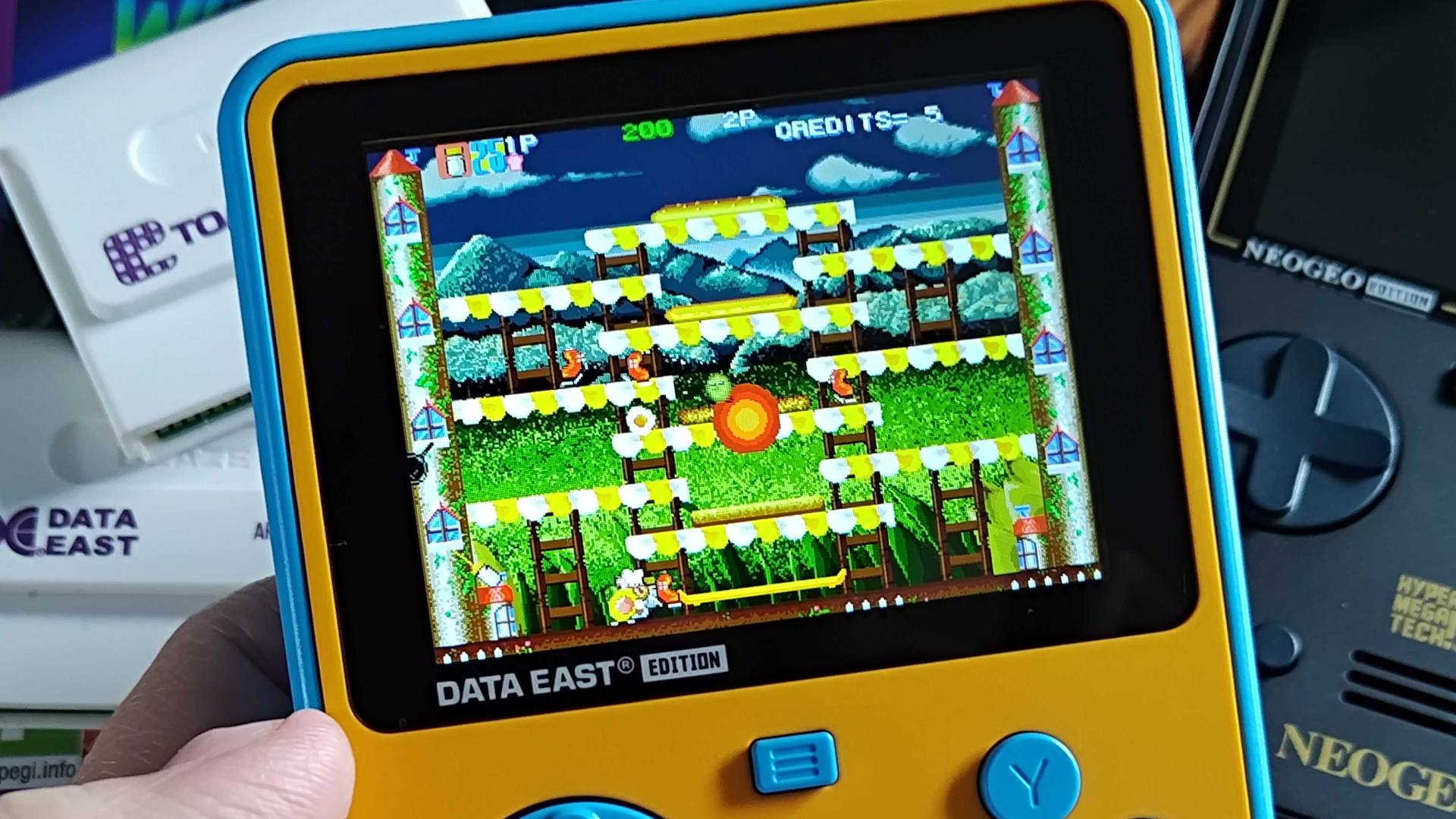
Specifications
Reasons to buy
Reasons to avoid
Miss cartridges? We did too, until Phil tested the Super Pocket. This Evercade-compatible handheld comes in two flavors; one Taito Arcade Classic option and other dedicated Capcom number. Each one comes preloaded with its own games, but can also take advantage of the brand's physical cart collection as well. All that, for less than $60.
✅ You want a small footprint: If you want something that can hang out in your pocket all day, ready for a quick session at a moment's notice, this is your guy.
✅ You want easy access: A smaller pre-loaded list of games and easy Evercade cart compatibility means this is a pick up and play device, no downloads necessary
✅ You like a physical collection: It's not just those carts that can stock a shelf nicely, there are multiple Super Pocket models out there for collecting as well.
❌ You want more customization options: This is a basic system without any additional fine-tuning. If you're a connoisseur you might want something with a little more grunt.
❌ You prefer to use your own ROMs: The Super Pocket is designed to run without your files being necessary so if you already have a backup of your retro collection you'll need something else to run it on.
Design: This shouldn't be an unfamiliar layout. The Super Pocket follows the same Game Boy-esque vertical design as many other budget retro handhelds in the space, but does so with a pop of color.
It's available in both Capcom's yellow and blue theming with a more subtle mint and black colorway reserved for the Taito version. It's just bold and bright enough to get away with its plastic build. The less premium feel is certainly complemented by the fun colors, which somehow elevates the whole experience.
Features: You've got all your main controls for simpler games on the front face, but the Super Pocket also incorporates back buttons into its feature set. Four bumpers line the back panel, giving you plenty more options for later releases - excellent value at this price point. Their placement is a little cramped, and they can't be remapped, but we'll still take the extra functionality over nothing. You're also getting a 3.5mm audio jack and convenient USB-C charging port at the bottom.
Things are a little simpler under the hood. There are a few settings to tweak, but nothing compared to the in-depth refinements possible on more expensive retro handhelds. Still, display, audio, and difficulty are all accounted for with a couple of options available for each.
It's important to remember this isn't a ROM wizard. The Super Pocket has been designed to run its own pre-installed games or extras via Evercade cartridges. That means there's no way to get your own game files on the device. That's not necessarily a bad thing. If you just want your hit of nostalgia without having to rip yourself, this is the pick up and play system you've been waiting for.
Performance: The biggest benefit to running everything as HyperMegaTech intended is that all games are already well optimized for the Super Pocket system. It's not 100%, you'll need to spend more on any system to reach that kind of accuracy, but it's a reliable system with no headaches.
All controls prove snappy, responsive, and comfortable, though the D-pad design makes rolling movements less precise.
Read more: Super Pocket review
Best vertical retro handheld
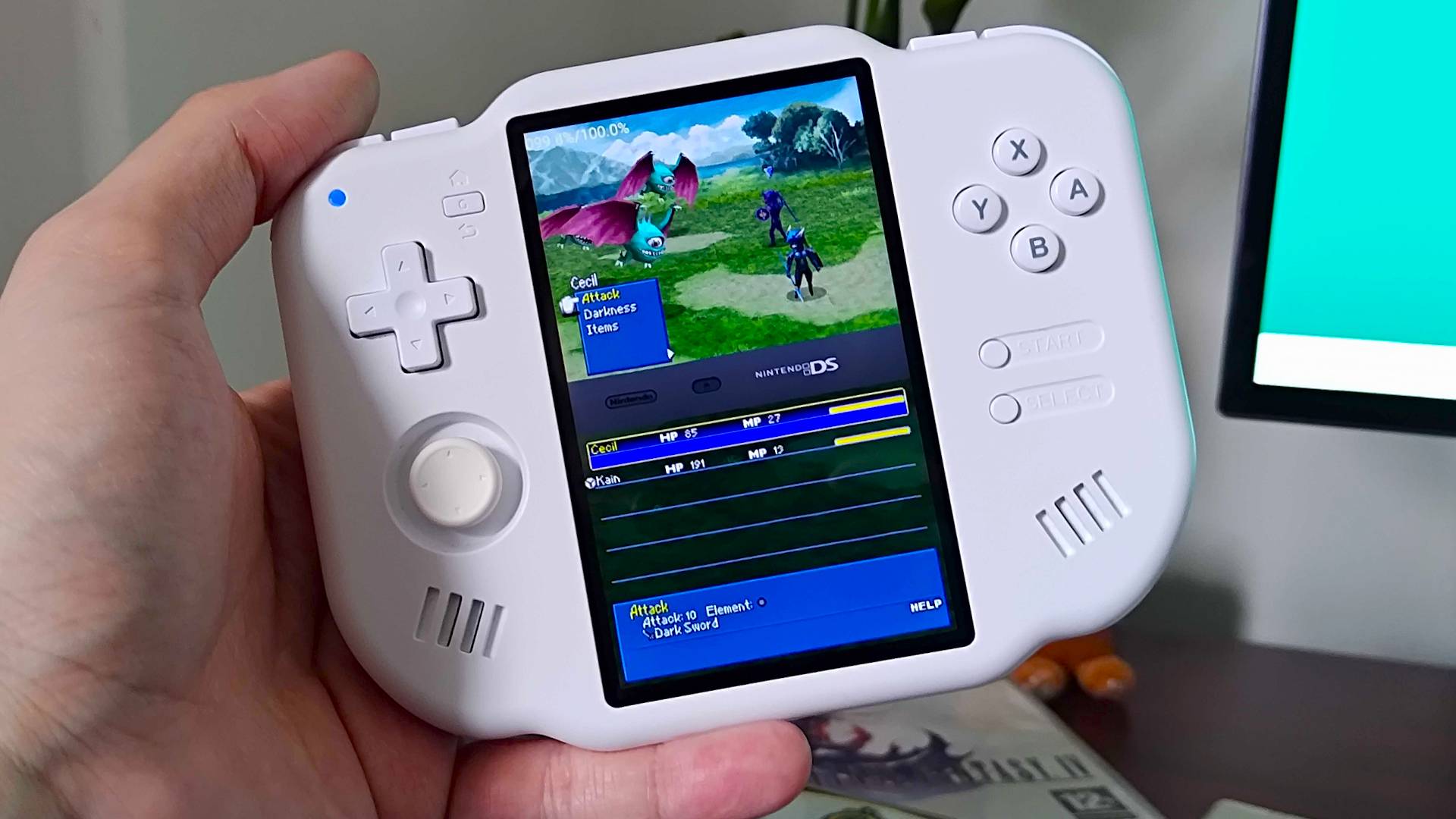
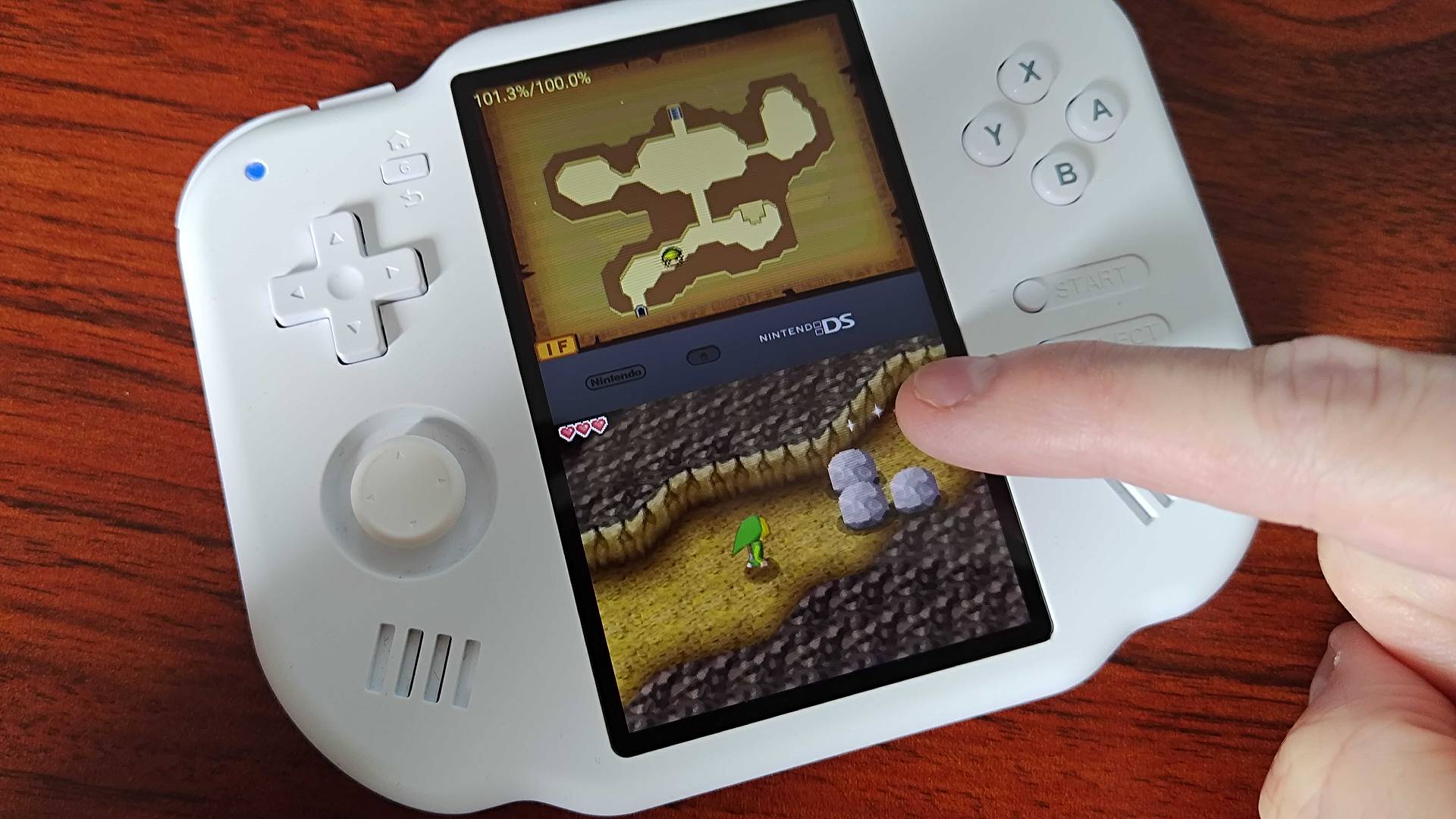
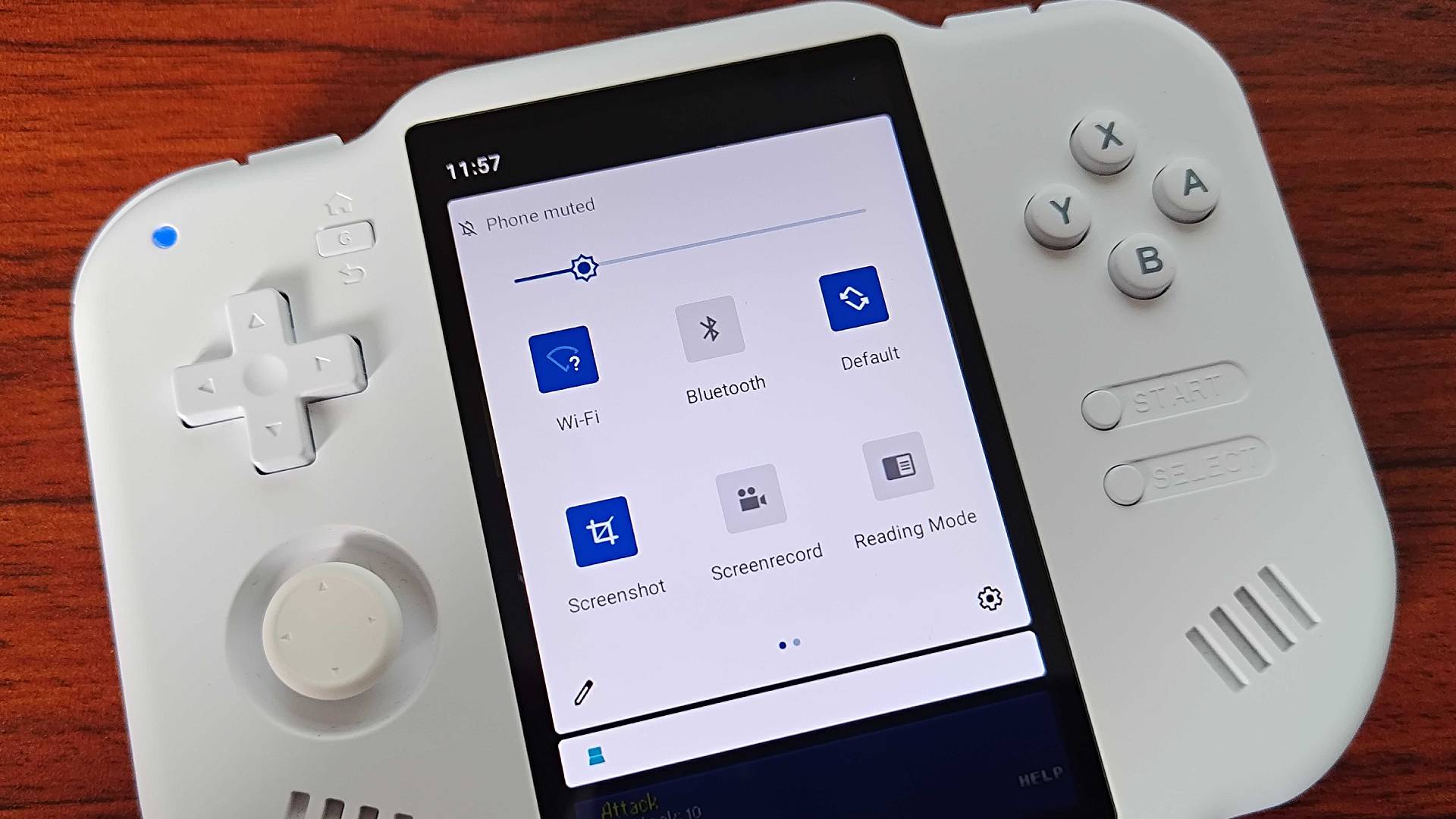
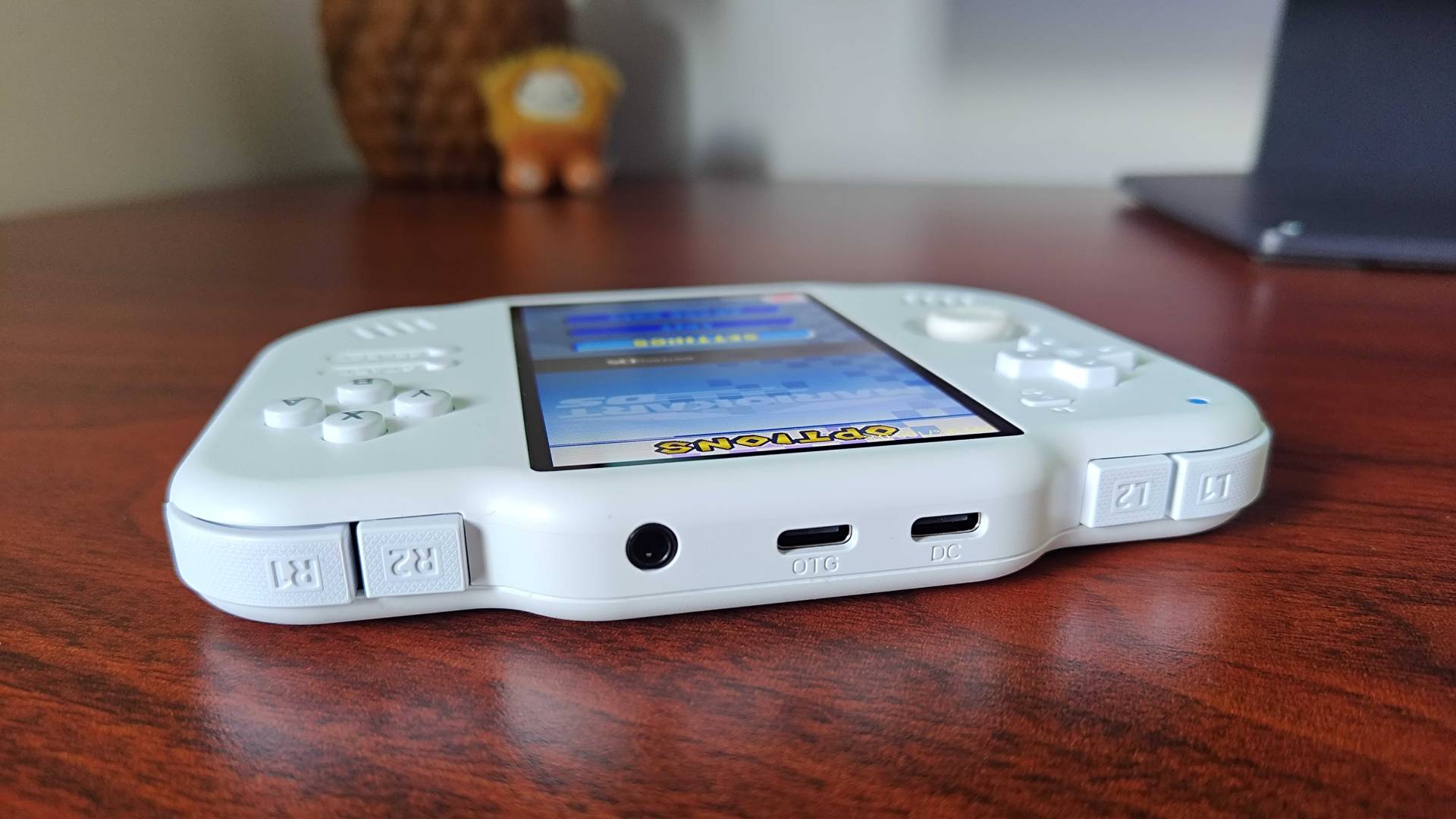
Specifications
Reasons to buy
Reasons to avoid
If you're hunting down the best vertical retro handheld for Nintendo DS emulation, or you're simply looking for a pocket arcade shooter machine, the MagicX Zero 40 should be at the top of your list. It's a funny lookin' thing to be sure, but after a month of testing we were easily lured in by this strange device's power.
✅ You want to emulate your DS collection: This thing was made to run Nintendo's dual-screened wonder, and it's where the miniature handheld shines brightest.
✅ Portability is a priority: The MagicX Zero 40 is smaller than many may imagine, but that's a big win for portability. It's also a bonus for comfort if you don't get on with wider horizontal handhelds.
✅ You need your save states: The MagicX Zero 40 packs a few handy software punches, like save states and fast forward.
❌ You want some screen separation: One of the main draws of a vertical retro handheld is the space it affords the screen away from your hands all over the controls. If that's your goal, check out the Super Pocket instead.
❌ You want to run multiple consoles: That elongated display isn't best suited to running all the usual retro consoles.
Design: Think of a Nintendo 2DS, now shrink it and cut away the corners. You've got yourself a MagicZ Xero 40. That tall vertical screen runs all the way through the center of the device, with controls parked on either side.
That's not ideal for those looking to keep their buttons and screen separate, but it does make for a comfortable hold, especially with those curved edges in play. With a 182g weight and a soft-touch finish to the plastic shell, I was able to run this thing for hours at a time. My only concern lay with the 'scuffability' of that chassis. It does feel a little cheaper than some in the hands, so needs a little extra care.
Features: Your main window in retro goodness is a 4-inch 800 x 480 panel nestled between a set of face buttons, d-pad, and a Hall effect thumbstick. When emulating DS games, a fake bezel appears to create the illusion of two screens and maintain original aspect ratios. You'll still be able to run all your tall-screen games without it, though.
The entire thing runs on an Allwinner Cortex A53 A133P CPU at 1.8GHz, with storage options ranging up to 512GB with MicroSDs involved. The brand's operating system runs over Android 10, giving you access to WiFi, Bluetooth, screenshots, and recording in a familiar setup. Drastic and RetroArch are also pre-installed for easy access to your library's ROMs. That also means save states are in play here.
Performance: Those innards tackle DS games with particular aplomb, but also make for a speedy arcade experience as well. Games appear sharp and punchy with a strong contrast and sturdy vibrancy to each of our test games. Things are scaled down a little on the smaller displays, which could prove troublesome for some, but also ensures a crisp result as well.
Of course it has its quirks, the d-pad can feel a little too stiff for particularly nippy endeavors and those face buttons can rattle in their shell a little. However, the thumbstick feels smooth and tall enough to stay accurate - even if it does knock against the side of the casing at its full extension.
Read more: MagicX Zero 40 review
Best clamshell retro handheld
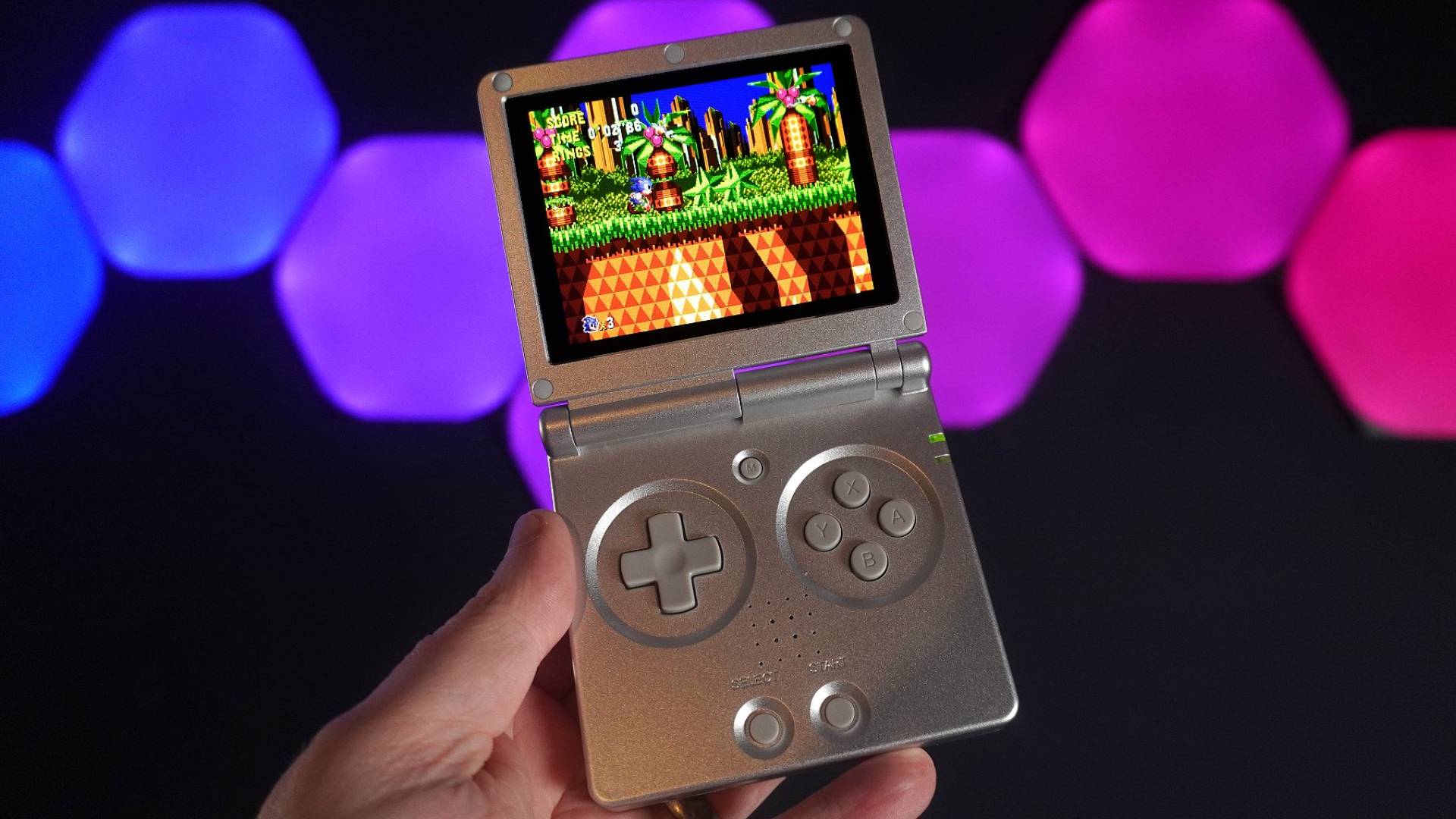
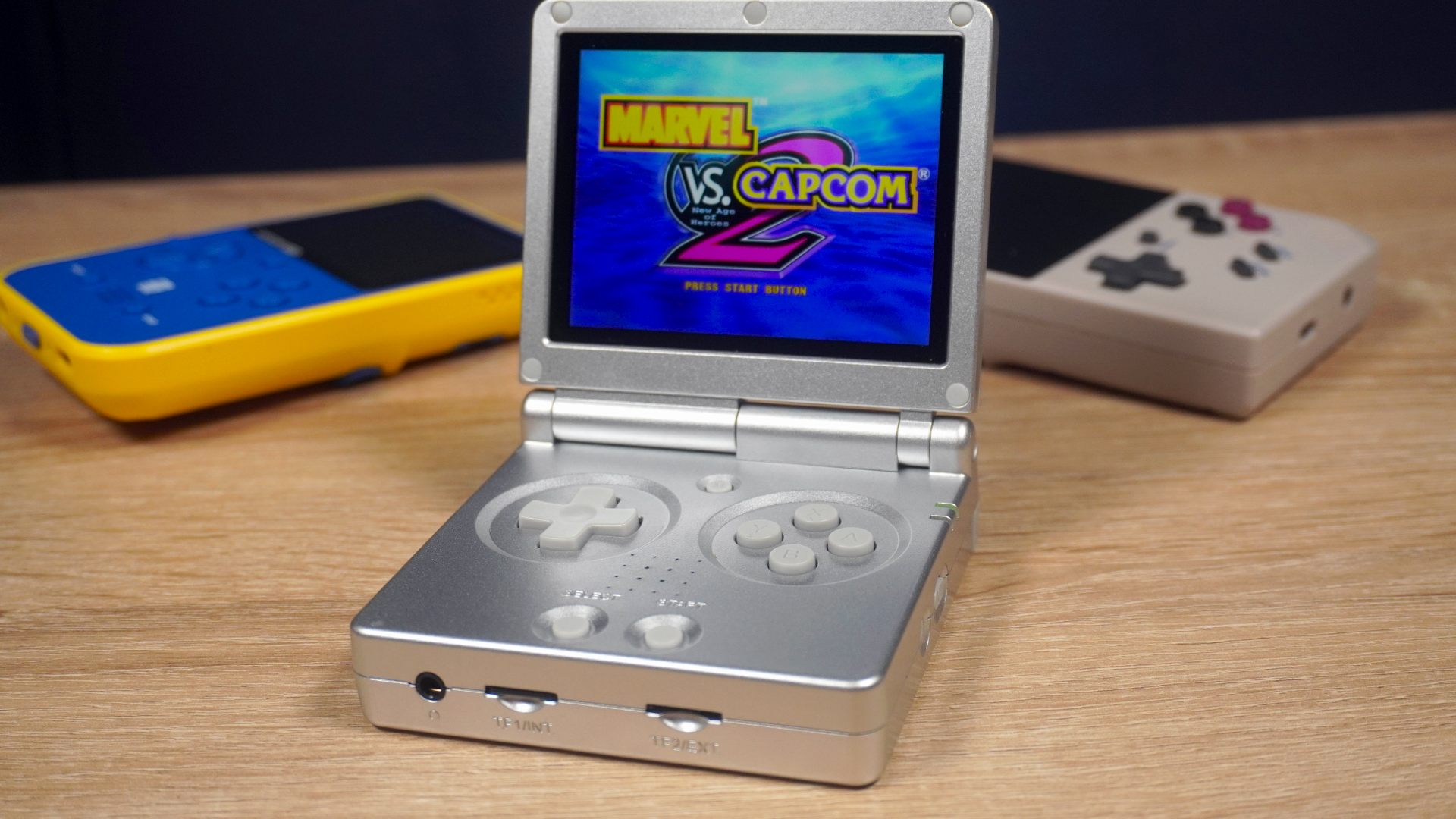
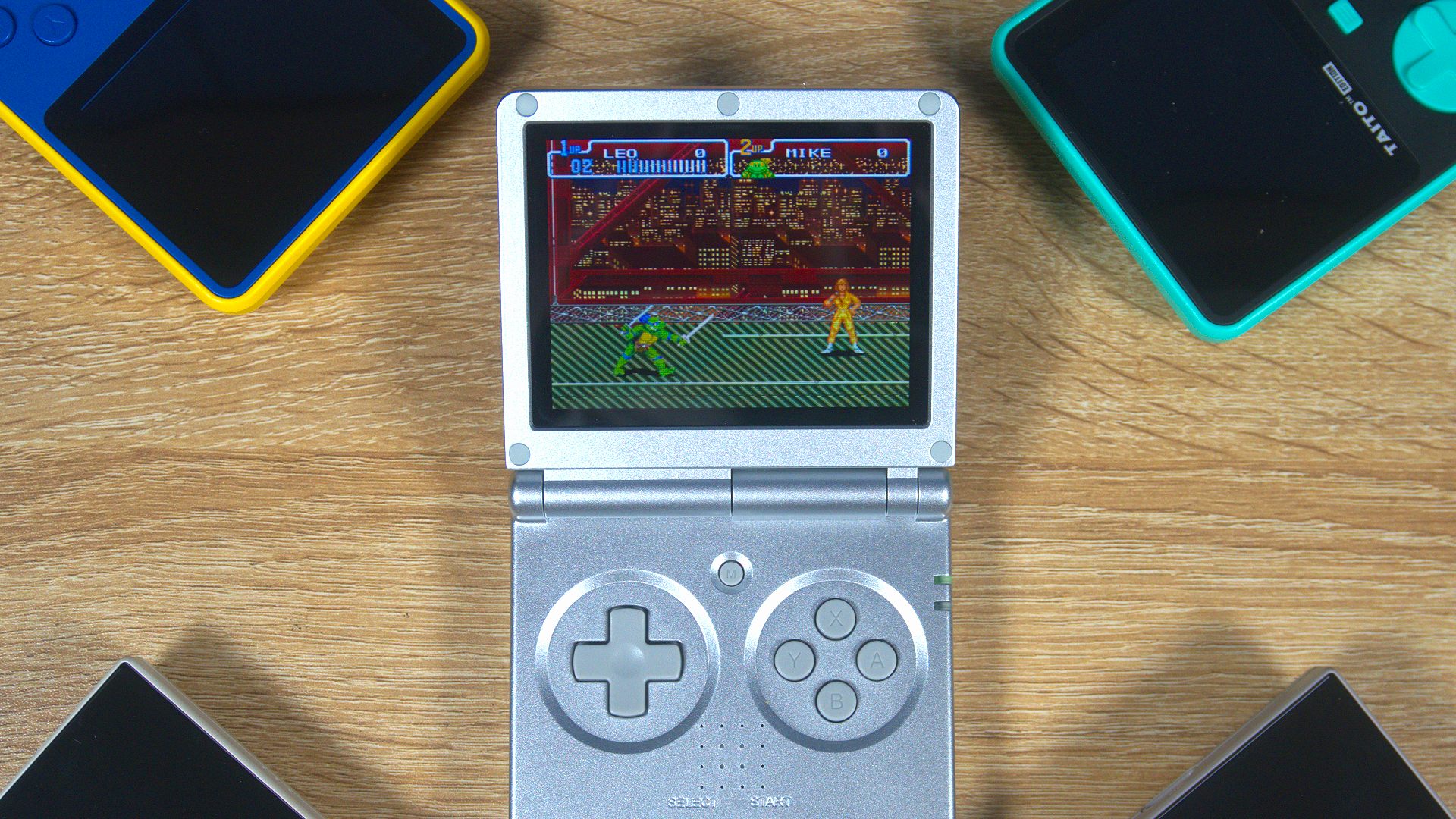
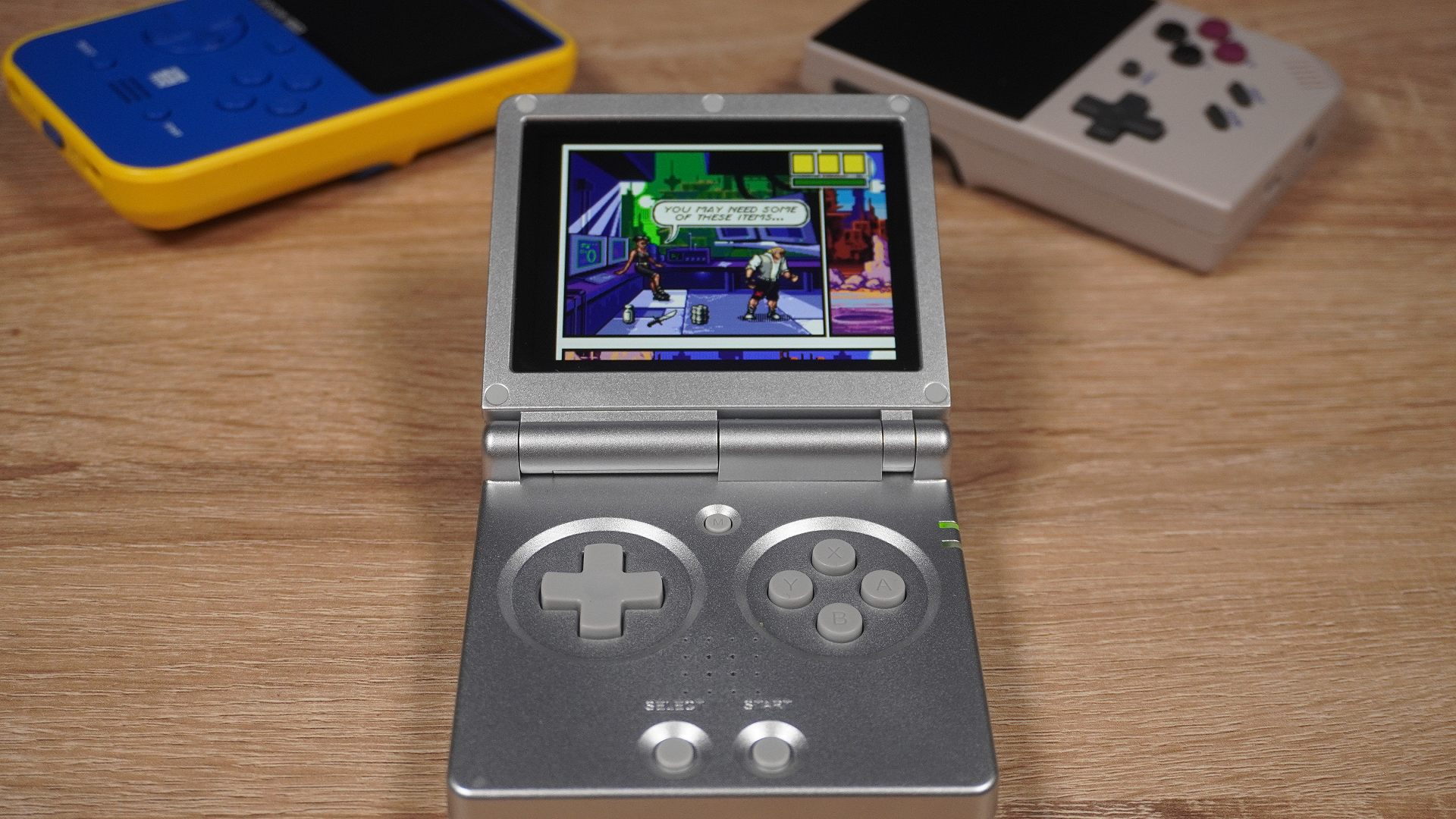

Specifications
Reasons to buy
Reasons to avoid
I'm a sucker for flip screens and clamshells, and the Anbernic RG35XXSP does a fantastic job of transforming one of my favorite flippy consoles, the GBA SP, into a mean emulation machine. Under the hood, this portable will feel pretty familiar if you've checked out the brand's other devices, but this time, it's all about that hinge, baby.
Design: I'd like to think I could pass a Pepsi challenge when it comes to the GBA SP, but if any device was going to fool my metaphorical taste buds, it'd be the Anbernic RG35XXSP. This handheld's resemblance to Ninty's 2000s clamshell is uncanny, and while it naturally ditches the cartridge port at the bottom and upgrades the screen to a backlit 480p IPS display, everything else is almost like-for-like.
That's for better or for worse, as that means you're getting the same extremely flat feeling d-pad and buttons as the real GBA SP, as well as zero curves at the back. Some might call that an ergonomic nightmare, but it's pretty much in line with most other clamshells of this nature out there. Simply put, the RG35XXSP feels very authentic and is largely serving up vibes over sensible handheld design. That said, it is very pocket-friendly since it clams into a neat square when not in use.
Features: Anbernic follows a set formula when it comes to its sub-$100 handhelds. Just like the RG28XX and RG35XX Plus, its clamshell RG35XXSP cousin also wields HDMI output, rumble, up to 512GB TF card storage, and USB-C connectivity. You are also getting Wi-Fi and Bluetooth, which will also help you get your library into the Linux OS with potentially less faff.
Compared to an actual GBA SP, you're also getting a far nicer screen than the original AGS-001 model. So, if you've been eyeing up the OG fancy backlit AGS-101 but can't stomach current prices, the RG35XXSP could make for an excellent alternative. Plus, it'll emulate plenty of other consoles without much of a sweat, and that includes PS1 and Dreamcast romps.
Performance: As I've already spoiled, the RG25XXSP can handle much more than just GBA SP games. It'll happily let you fire up some PS1 and Dreamcast outings if you aren't too ambitious with settings and scaling. I wouldn't try and play those 3D entries on a big screen via HDMI, but you'll certainly be able to mess around with late 90s adventures.
The RG35XXSP's bread and butter is, unsurprisingly, the games that you would have played on Nintendo's own handheld. The controls are all suited to SNES-like 2D experiences or RPGs like Pokemon, and even then, there are more comfortable ways to play those classics. That matters not if you're really itching to use a clamshell again, though, and Anbernic's flipscreen handheld makes sure to lean into that without altering the original format in the name of comfortable shoulder buttons and a nicer d-pad.
Read more: Anbernic RG35XXSP review
The best retro handheld for PS2
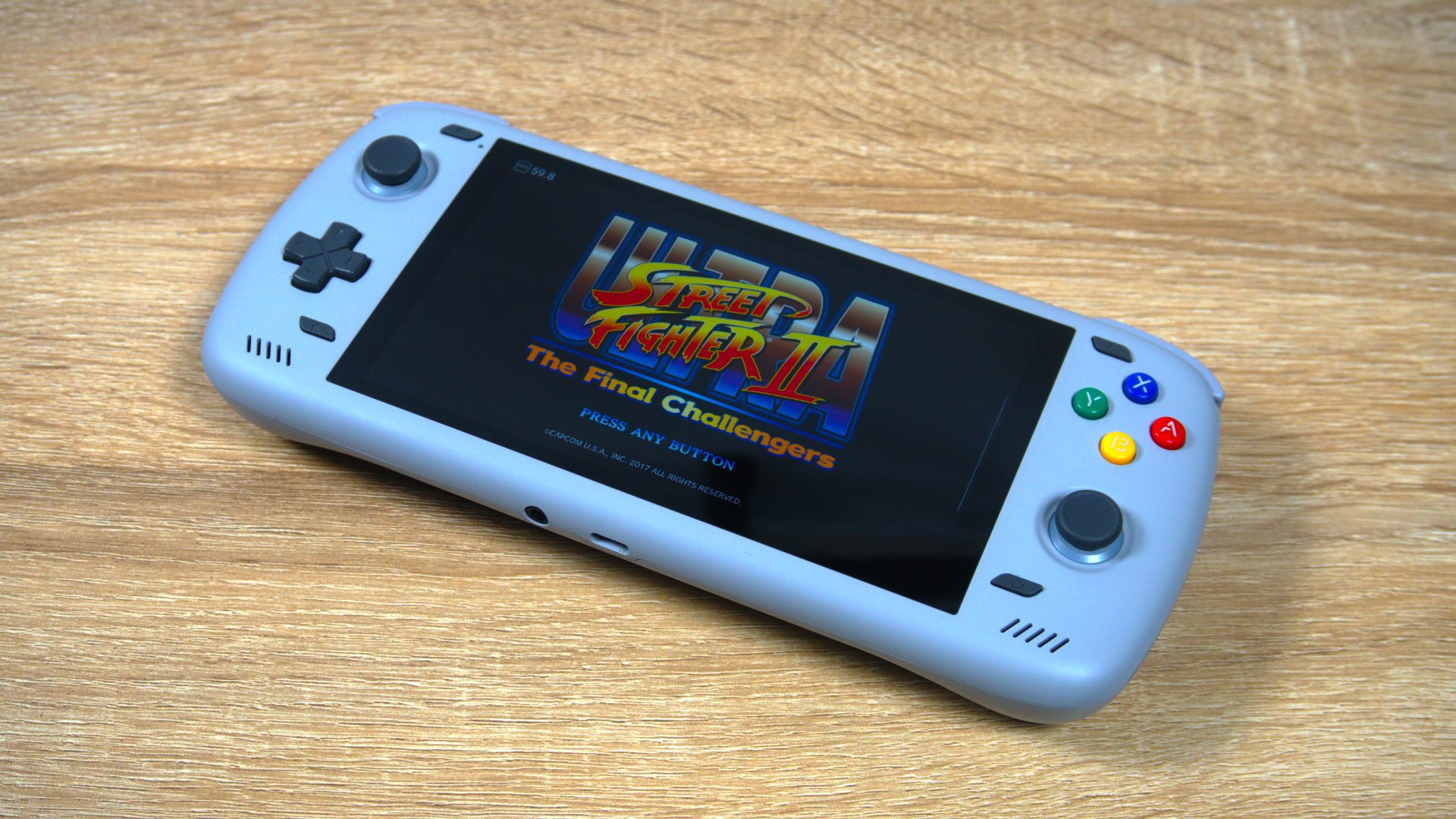
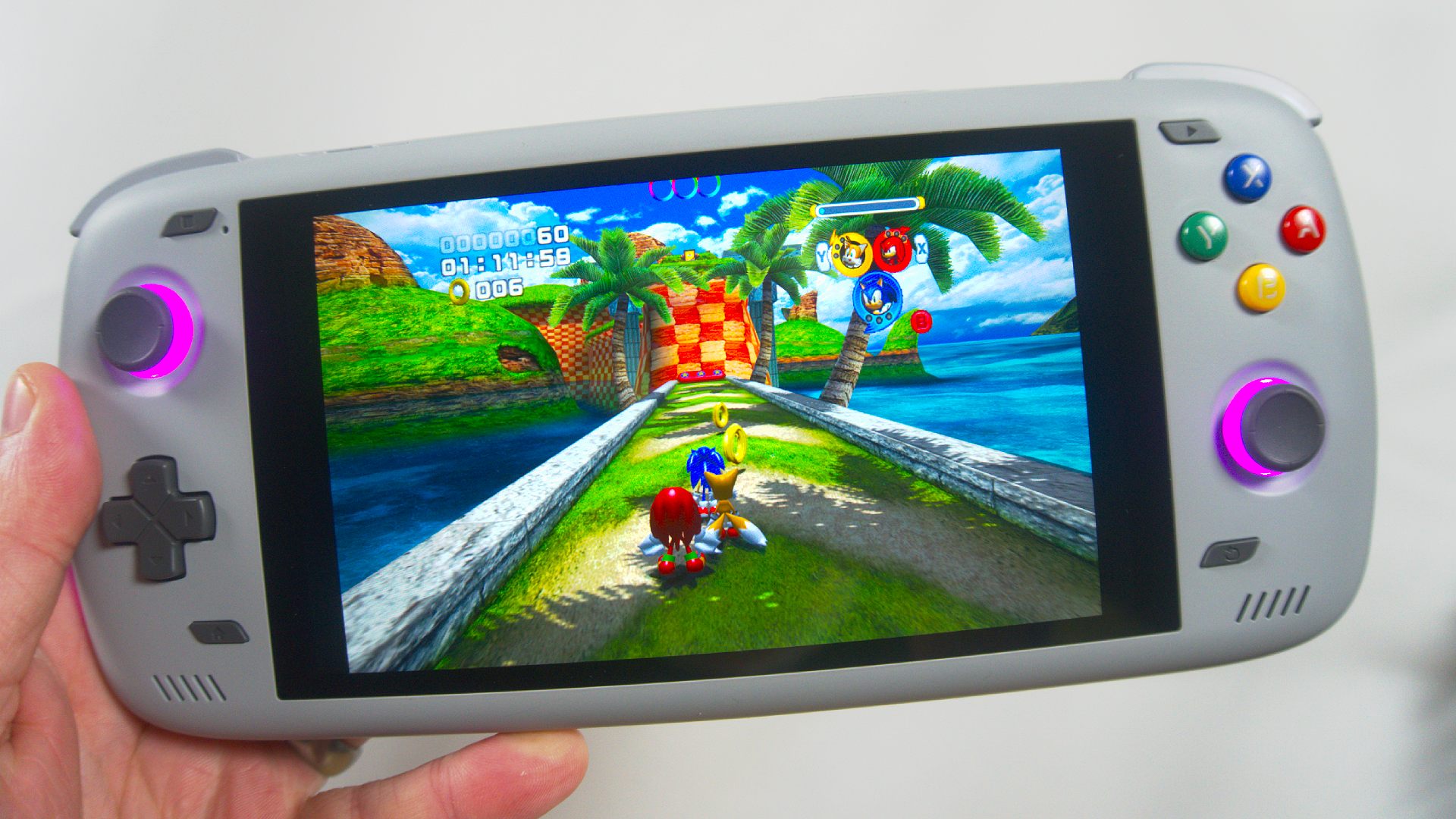

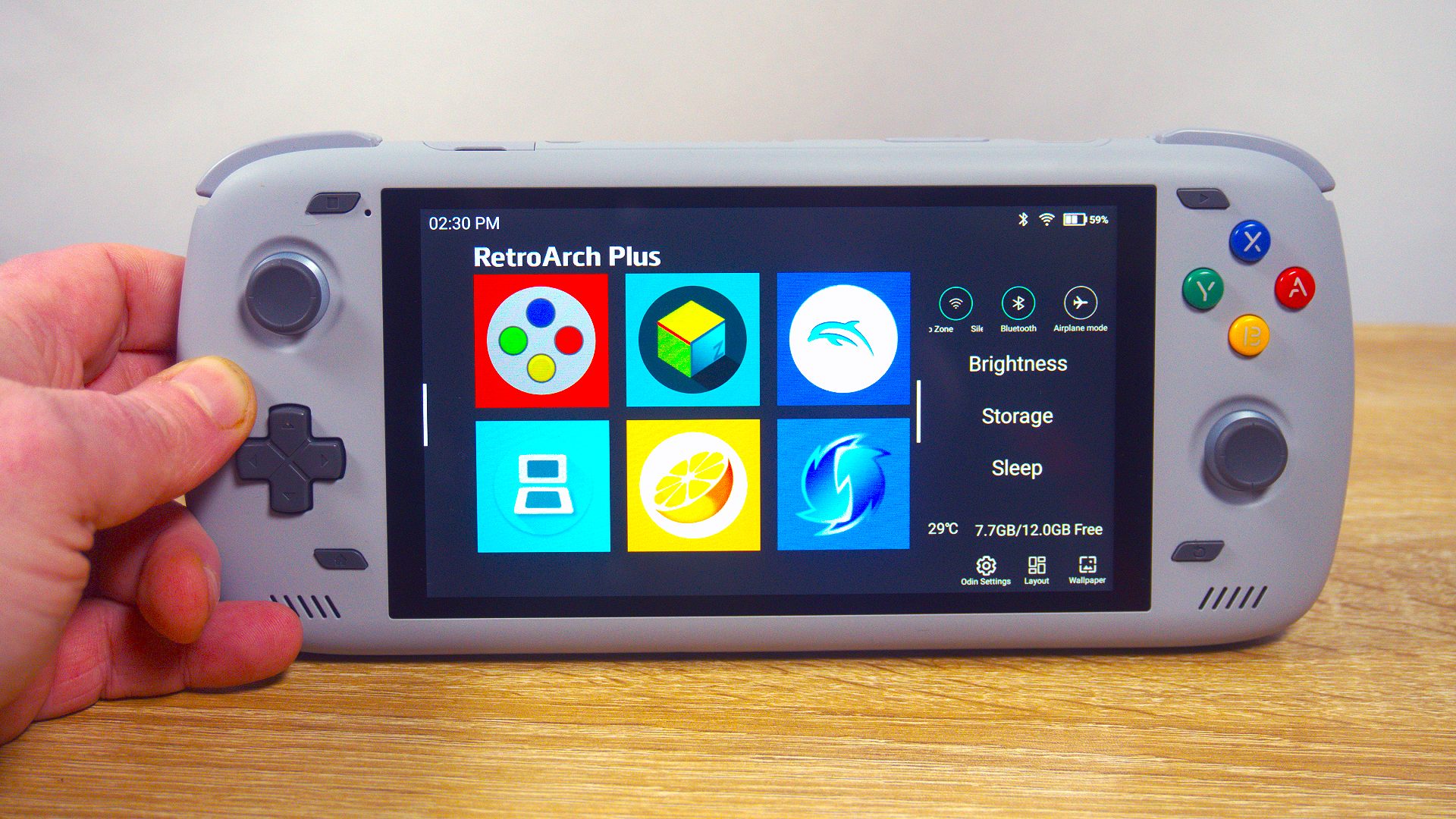
Specifications
Reasons to buy
Reasons to avoid
The best retro handheld we've tested for PS2 games remains the Ayn Odin 2, an Android beast that makes short work of a range of Sony titles. Its predecessor was already 90% of the way there when it comes to emulating Sony's console, and between the Base, Pro, and Max models the newer generation adds the finishing touches.
✅ You want to spend less than a Steam Deck: Why splash out on a whole Steam system when you just want to run your retro collection? The Ayn Odin 2 is more expensive than some retro handhelds, but still cheaper than a Steam Deck OLED.
✅ You don't want to skimp on the screen: If you still want a modern 1080p display, either to work around PS2 games or run separate Android apps, this is a fantastic bet.
✅ You play for longer sessions: See yourself rinsing this thing for hours at a time? You'll be glad to know the design complements a relaxed grip particularly well.
❌ You want to play modern titles as well: We're knocking on the door of that Steam Deck price here, so if you do want to explore Valve's library as well you're better off with an all-in-one device.
❌ Portability is a priority: If you're worried about adding another gadget to your kit bag, it's worth noting that the Ayn Odin 2 Mini comes in a far more compact form factor.
Design: This thing is all about its screen, clocking in at 6 inches and taking up the majority of the front space. There are more nuanced upgrades at play here, though, that make the Ayn Odin 2 far more comfortable than previous iterations. Concave thumbsticks offer far more precision in-game, while also allowing the thumb to nestle deeper into the control scheme. Unfortunately, we did find the face buttons to be a little too small to maintain that comfort during extended presses, but the curved grips and smart vent placement mean everything else feels well designed for longer sessions.
Features: Actual specs depend on the version you pick up, ranging from 8GB RAM all the way up to 16GB, and with 128GB, 256GB, and 512GB storage options. All models run on Qualcomm's Snapdragon 8 Gen 2 chip, featuring a 6-inch IPS touchscreen running at 1080p / 60Hz. That's a solid set of specs when set against the world of cheaper retro handhelds, and the exact kind of power you need to get the PS2 up and running.
Boot it up and you'll find the brand has reskinned Android 12 for a horizontal experience, but also packaged in its own launcher. This is where the magic happens. All your emulators are neatly organized, all sitting just a tap away. The system also allows for easy in-game navigation to key mapping features and framerate monitoring.
Performance: We managed to get PS2 games running with forced widescreen no problem, and they looked fantastic on that 1080p panel. That also means you'll easily be able to run weaker systems like GameCube, 3DS, and PSP. Framerates remained smooth in our testing, without any artifacts or crashes.
Read more: Ayn Odin 2 review
Also tested
Modretro Chromatic | View at Modretro
This Game Boy Color remake uses FPGA technology to mimic Nintendo's '90s handheld on a hardware level, boasting physical cartridge support, an authentic but vibrant backlit screen, and new features like video capture via USB-C.
Best for: Game Boy Color games
Read more: Modretro Chomatic review
Anbernic RG35XX Plus | View at Amazon
The RG35XX Plus is a bit more of a traditional Game Boy clone, but it's one that's worth a look if you want something that'll work wonderfully for SNES games and experimenting with later 3D classics.
Best for: Super Nintendo, Sega Genesis
Read more: Anbernic RG35XX Plus review
Ayaneo Flip DS | View at Ayaneo
If you want a clamshell that also happens to be a powerful handheld gaming PC, you'll want to peek at the Flip DS. Like other Ayaneo devices, it's fairly pricey, but it's going to offer up a phenomenal 3DS experience that's near unbeatable.
Best for: Nintendo 3DS games
Read more: Ayaneo Flip DS review
Evercade EXP-R | View at Amazon
If you're looking for something beefier than the Super Pocket, Blaze's full-fat Evercade EXP-R handheld will be up your street. It's a solid option for arcade games and over 500+ ports across a variety of platforms, and it even has a vertical TATE mode for shmups.
Best for: Arcade games
Review coming soon
Anbernic RG ARC-D | View at Amazon
This larger handheld by Anbernic draws inspiration from the Sega Saturn, and that helps it punch super hard as a dedicated device for playing Genesis and Dreamcast games too. Its six-button layout means it's also a fantastic option for fighting games across all platforms.
Best for: Sega Genesis, Saturn, Dreamcast, and fighting games
Review coming soon
How we test retro handhelds

Every retro handheld that reaches my test bench is subject to a series of tests, all of which help judge their worth as a console for classic capers. While every portable is designed to cater to slightly different use cases, scenarios, and budgets, my ultimate goal is to reveal whether a device fulfils its brief in terms of value and performance.
Again, having a deep knowledge of handhelds, old and new, is key, and it takes many hours playing retro games on each portable to come to a verdict. I typically spend around two weeks with each device, focusing first on using it to play adventures in real-life scenarios, whether that be on the couch, a train, in the middle of nowhere in the Scottish highlands, or even during my sister's wedding (don't tell).
Using each retro handheld extensively helps form the foundations of a review. The time spent with a portable in my palms ultimately paints a picture of its design qualities, features, performance, and whether it's the best option within its respective category for the price. That's arguably something that only becomes clear once you've spent 30 years using different devices.
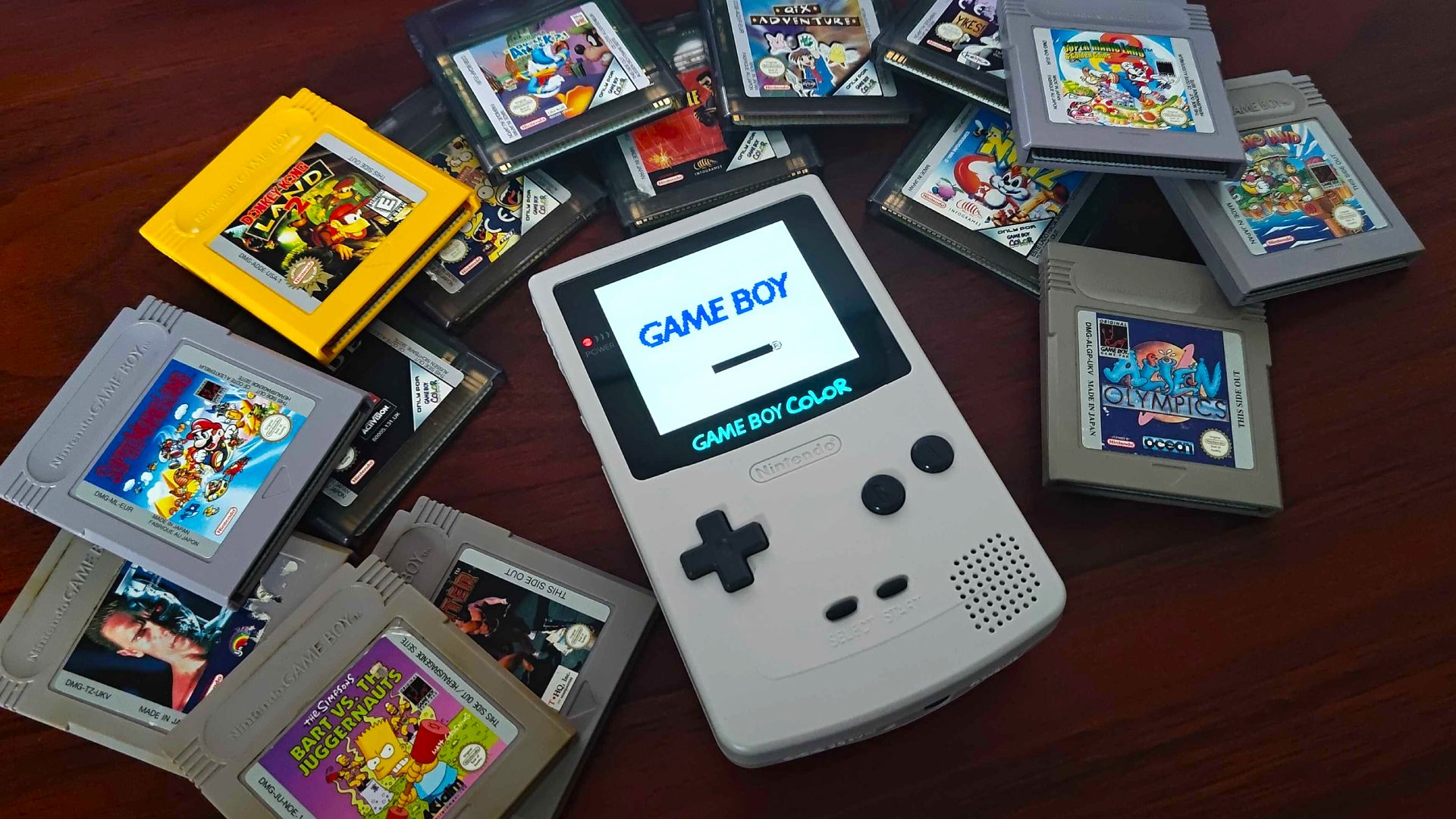
In addition to qualitative, real-life testing, I also like to check performance by playing retro games from specific generations. Not every console will have access to the same libraries, and while emulation devices can technically access the same apps, their innards sometimes aren't suited to handling specific platforms.
The main focus during these performance checks should be reliability. The end question to be answered is whether a retro handheld can run the games it's meant to with a stable frame rate and without any intrusive audio glitches and visual bugs. Once I'm satisfied that a portable can provide the experience it's promising, I then assess whether it can punch harder than its rivals and alternatives via better upscaling, experience-enhancing features, screen quality, and its chosen form factor.
Again, each retro handheld tends to boast unique qualities that make them worth grabbing as a modern solution. Carefully assessing who each device is for, whether it's price is appropriate, and whether it comes out on top against similar alternatives is key, and new contenders are constantly entering the battlefield. Some handheld heroes will stay in the fight for longer than others, but it's my job to crown new victors through continuous testing.
How to choose a retro handheld

It might sound like stating the obvious, but working out how to choose a retro handheld is all about your own personal preferences. It might be tempting to go with someone else's top pick automatically, mine included, but ultimately, you should be grabbing the portable console that caters to your specific needs, budget, and taste in games.
You'd think choosing a retro handheld would start with setting a budget, but I'd actually think about the games you want to play first and foremost. The last thing you want to do is to spend too little or too much on something that isn't actually what you want, as that will usually lead to you buying twice or being out of pocket.
I'd start off by taking note of all your favorite adventures, then highlighting the games you'd actually like to play on the go. Once you've got a clear vision of the outings you wish to embark on, I'd then think about how much you're willing to spend on a device. By having a list of classics to hand first, you'll be able to check out all the top contenders and pluck out the options that can actually run the romps you desire.

I'd also take some time to decide whether you're willing to use your own game backups with emulation, or pick up something that can run physical cartridges. Both are viable options, but the latter may involve picking up more games rather than simply playing your existing library.
Once you've started to build a suitable shortlist of retro handhelds, I'd start thinking about the features you value. If you care about ergonomics and controls, you'll want to focus on form factor and premium elements like hall-effect thumbsticks and microswitches. Too used to using vibrant screens with your console or PC? Opting for something with an OLED display could be the answer.
Even once you've got the perfect portable pal in mind, I'd urge you to swing by to check out my retro coverage. I spend a lot of time testing portable consoles, so I'll be able to fill you in on areas like battery life, performance, and real-life usability. I always continue to keep track of updates to devices and any potential bugs, too, so catching the news before you buy is wise.
If you're looking for broader advice on grabbing a portable, I've got you covered on how to choose a gaming handheld. While most of you will be looking for something to specifical run retro games, opting for a handheld gaming PC or another Android device could be a good alternative if you want to play more than the classics.
Already rocking Valve's portable PC? Swing by the best Steam Deck accessories and best Steam Deck docks for handy add-ons.
Weekly digests, tales from the communities you love, and more

Phil is currently the Hardware Editor at GamesRadar+ who specialises in retro gaming, the best gaming handhelds like the Steam Deck, and more modern components like graphics cards. Having spent years offering up classic console advice and over a decade as a gaming journalist for big names like TechRadar, The Daily Star, the BBC, Den of Geek, and many more, Phil now dedicates their days to covering the latest news and offering up invaluable setup advice.
